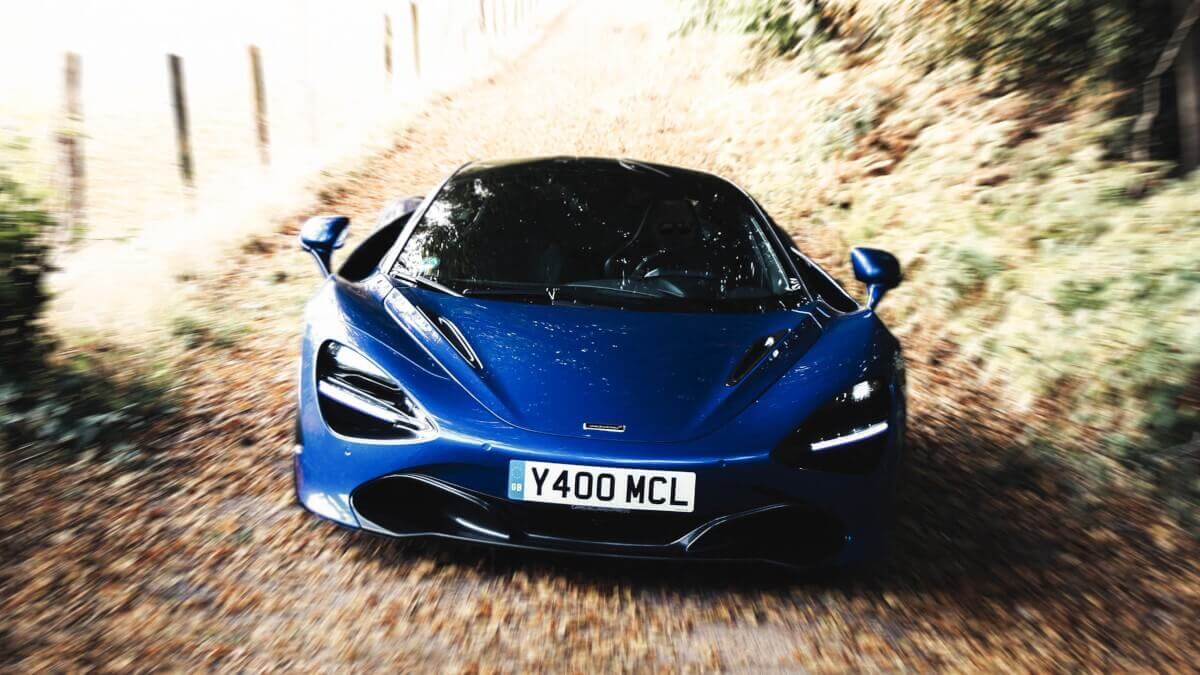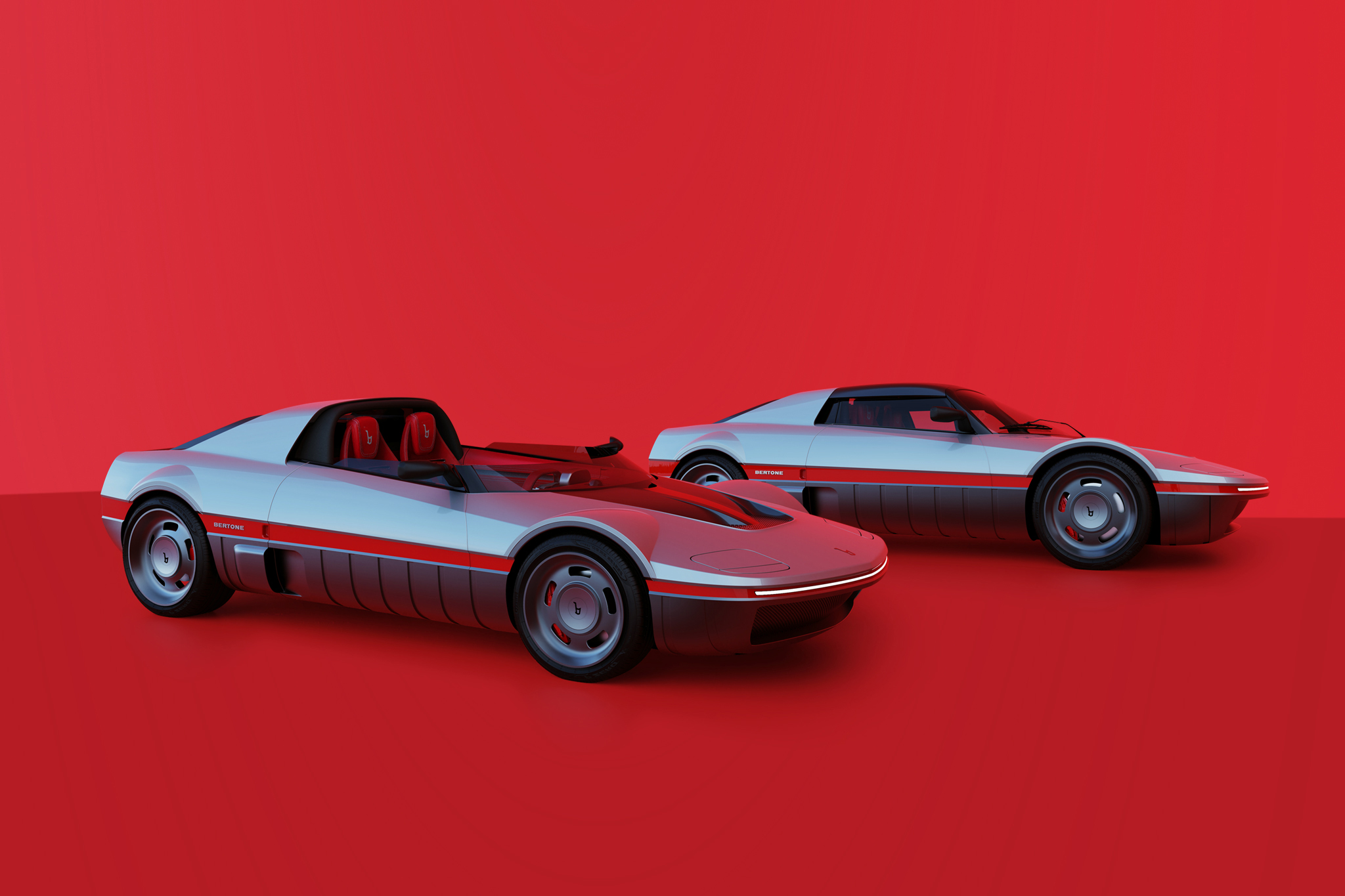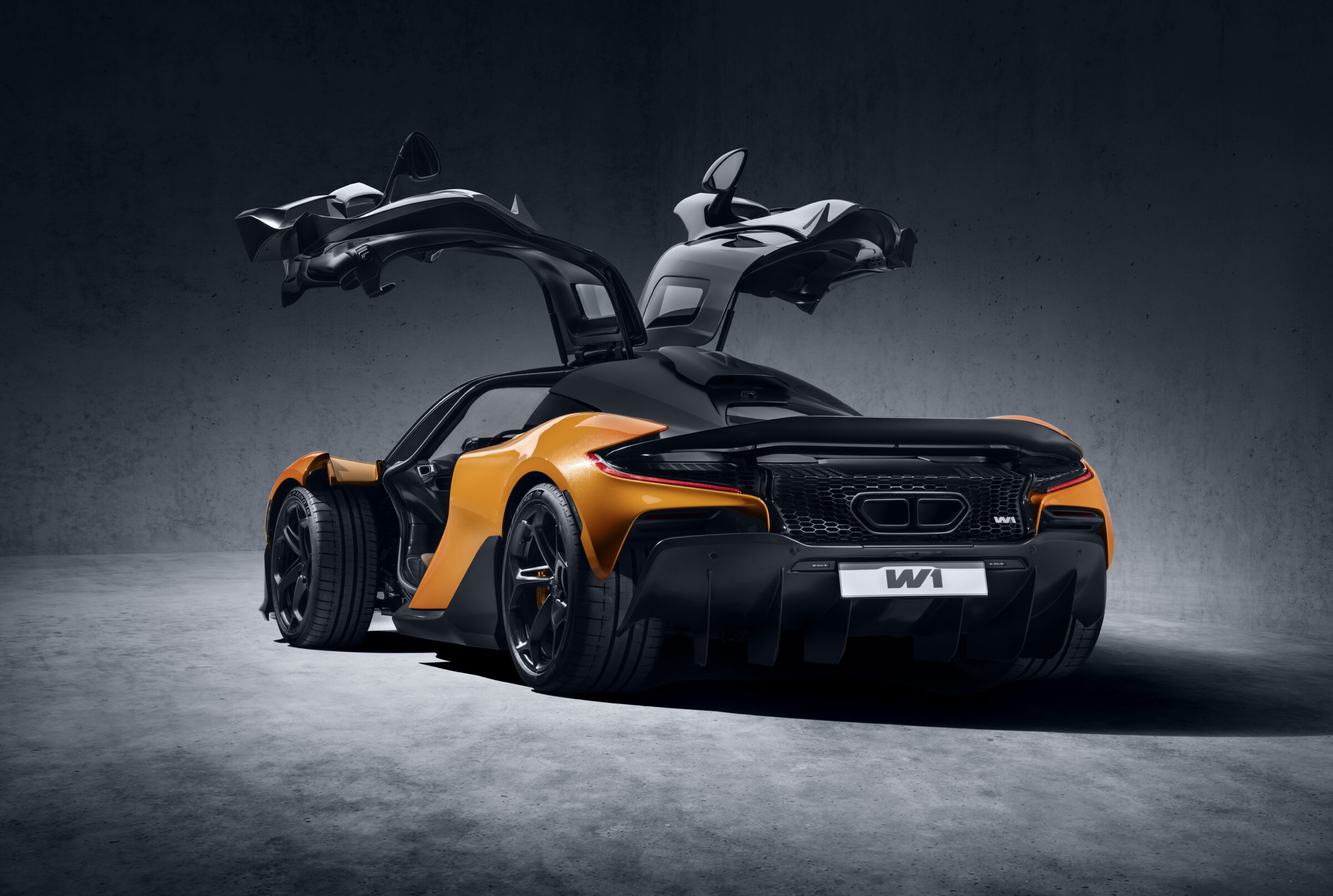Drive: McLaren 720S
The request came unexpectedly and at short notice, but who would have wanted to say no? It read something like this: “Would it be possible for you to transfer a McLaren 720S to the McLaren factory in Woking/UK? Of course you may write a driving report about it.” After a quick glance at the calendar and a second on the weather forecast, the decision was made – well, actually before. A short phone call later I had to pickup the car at the other end of town. A short smalltalk, mirrors and seat set and up into the adventure. Right at the beginning there was something, oservers of a 720-horsepower supercar like to hide: the classical evening rush hour. In the first two of seven speeds the McLaren rolls through the traffic and only its paintwork in ‘Aurora Blue’ stands out of the ordinary grey, silver, black and white. Inside you enjoy the leather seats and the superb, optional Bowers & Wilkins audio system with 12 speakers. And then there is the knowledge of plenty of power reserves for any following case.
We believe acceleration and speed without testing
After the traffic finally cleared for that day, we took the 720S on to an actually relatively empty Autobahn. Here two points came up positively. On the one hand, the LED light of the headlamps is absolutely convincing, as it illuminates the road perfectly and, as it later turned out on dark country roads, turns the night into daylight together with the high beam. On the other hand, the British sports car convinces with a power output that is unparalleled. Before the feeling of a turbo lag can arise, the dual-clutch transmission shifts down a few gears and the vehicle gains momentum. Due to the cool asphalt temperatures and the lack of measuring equipment, we believe the values given by McLaren for the accelerations from zero to 100 and 200 kph (62 mph and 124 mph) in the data sheets untested. There are 2.9 and 7.8 seconds written. For the same reasons as well as a lack of free track, we also stayed away from the following two values: According to the manufacturer, acceleration to 300 kph (186 mph) takes only 21.4 seconds and topspeed is reached at 341 kph (212 mph). But what gives you even more driving pleasure, is the range between 100 and 200 kph on empty, unlimited sections of the Autobahn and country roads with many corners. Here the 770 newtonmeters of torque can be taken to full advantage, when they push the two-seater to the horizon and hammer a big grin into the driver’s face.
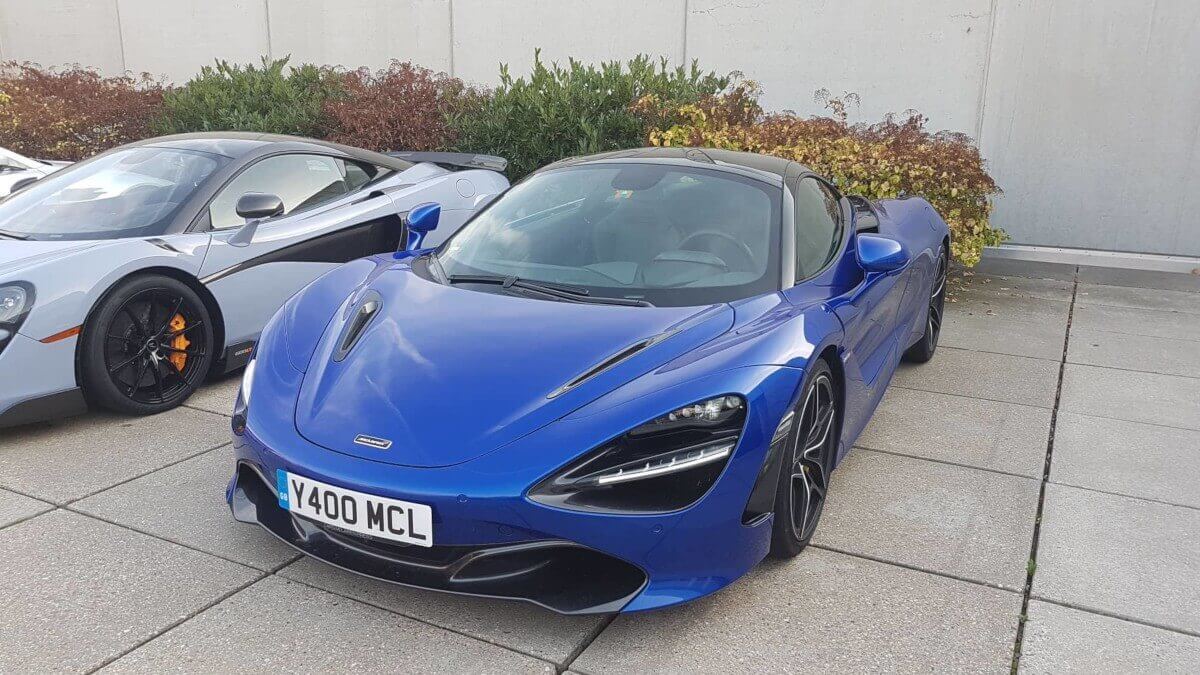

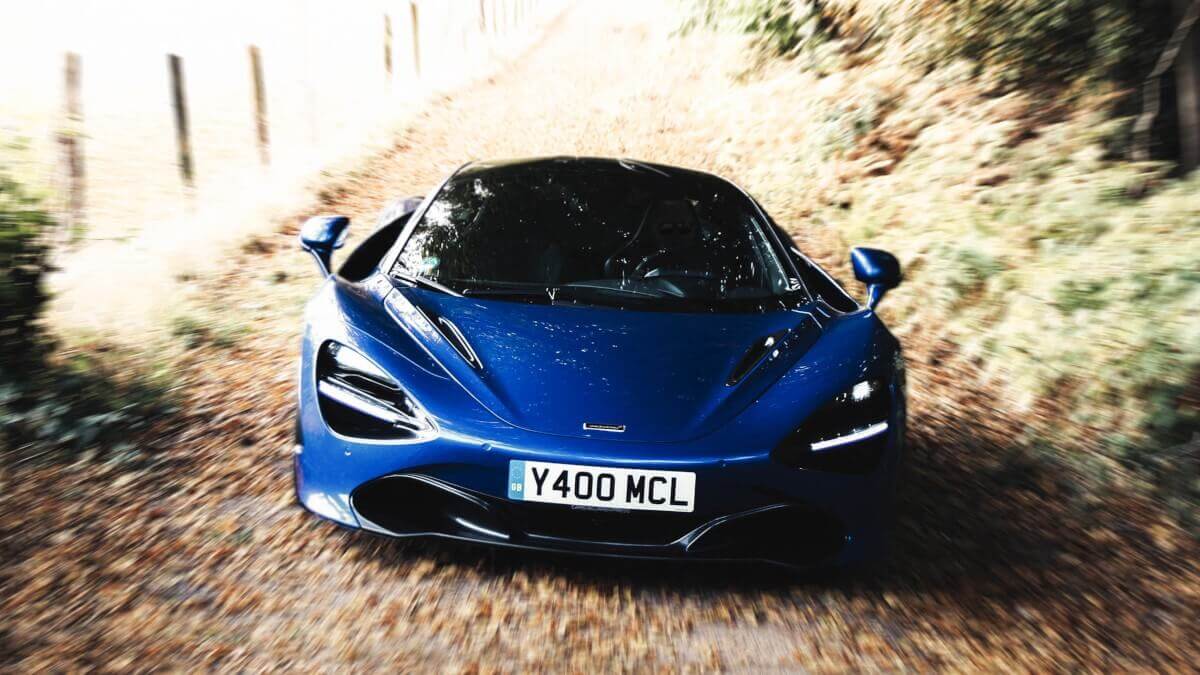

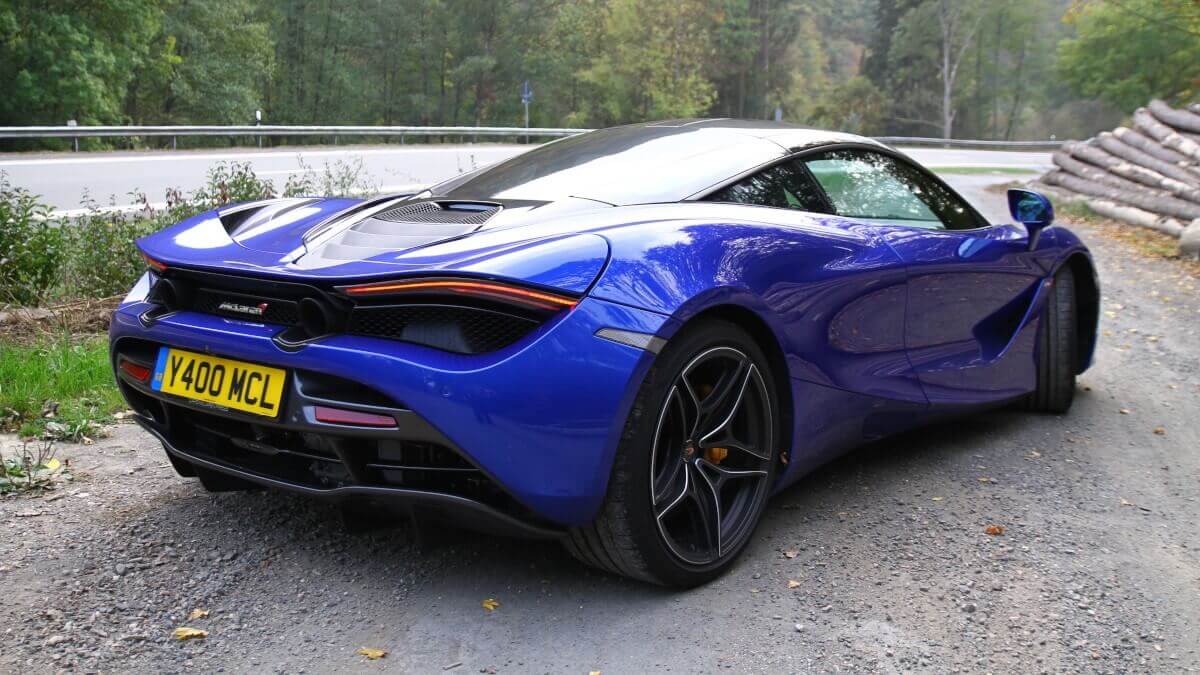

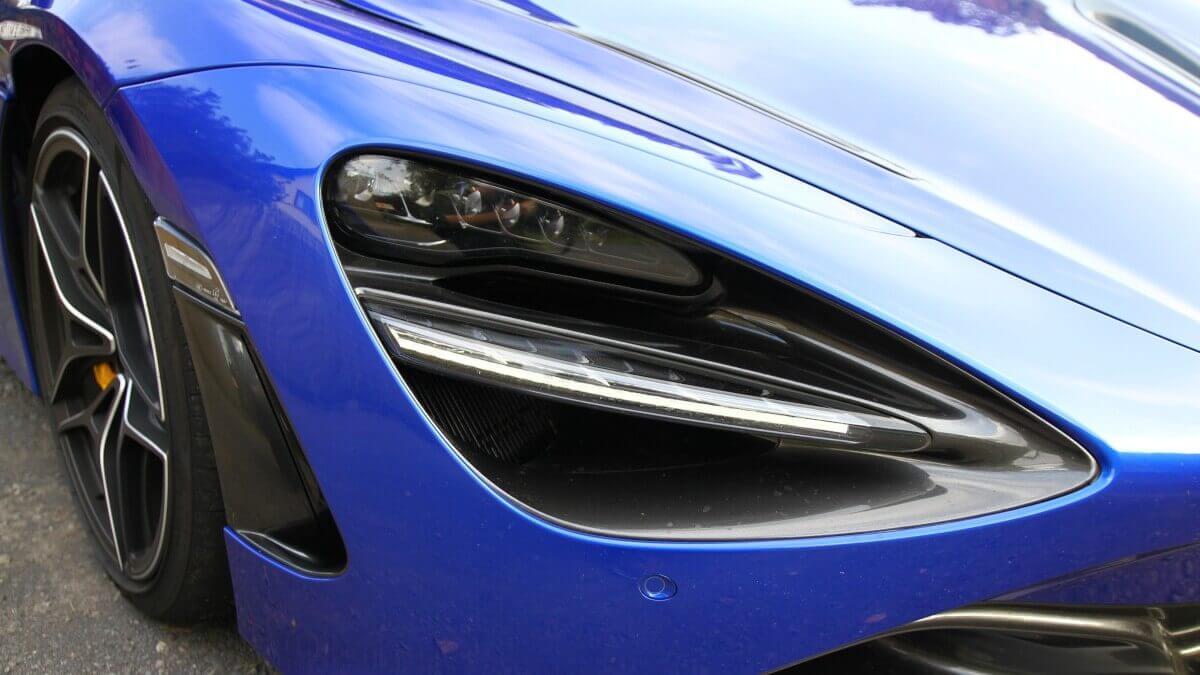

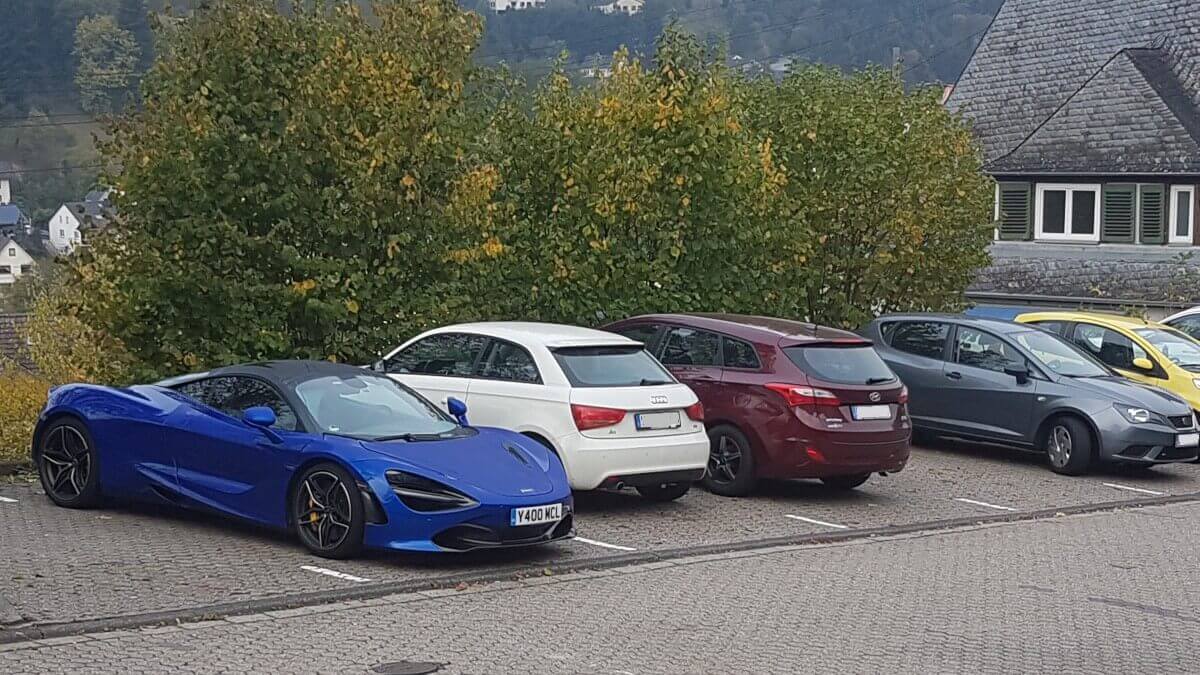

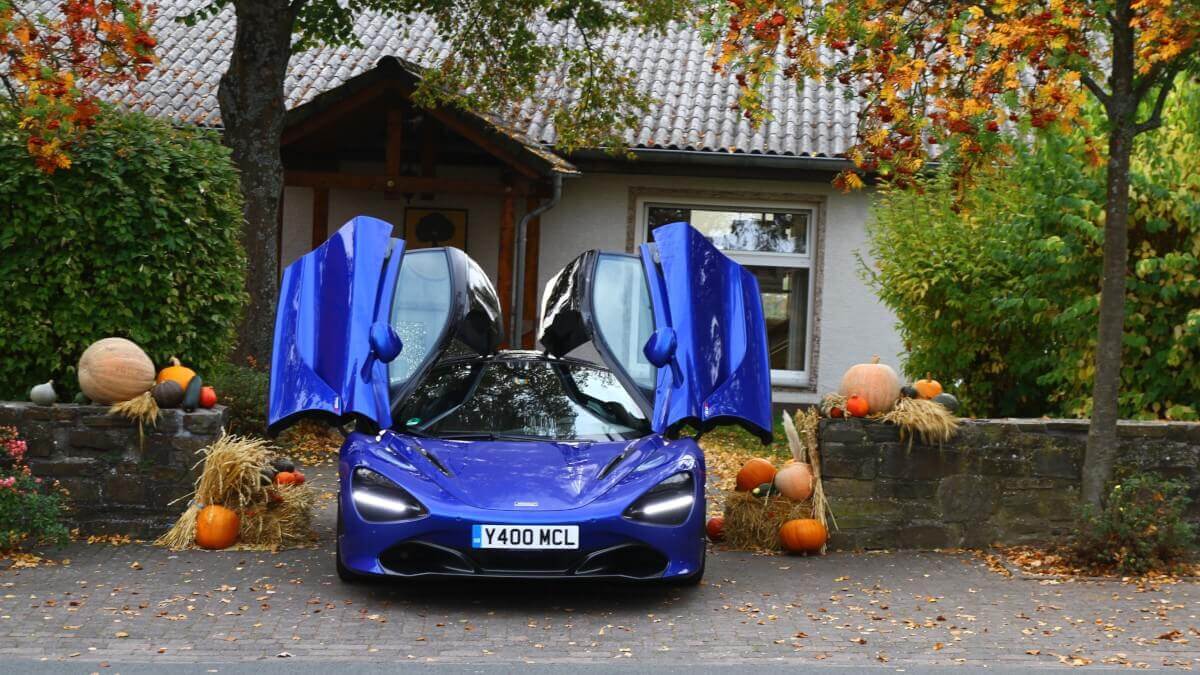

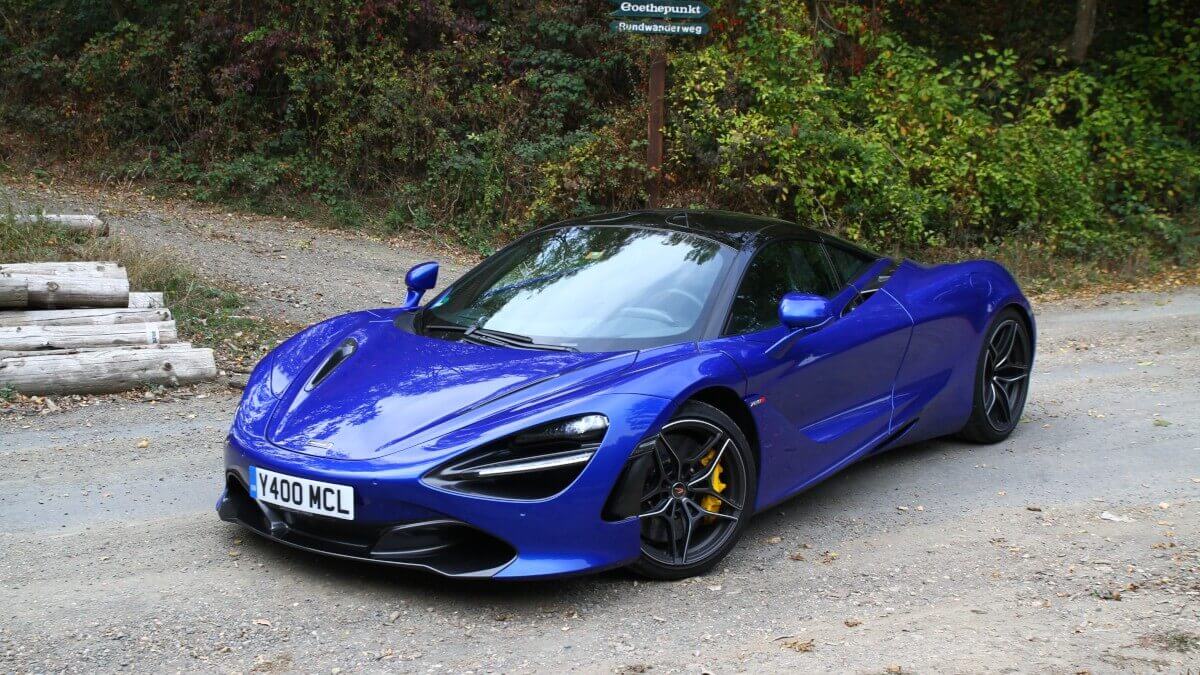

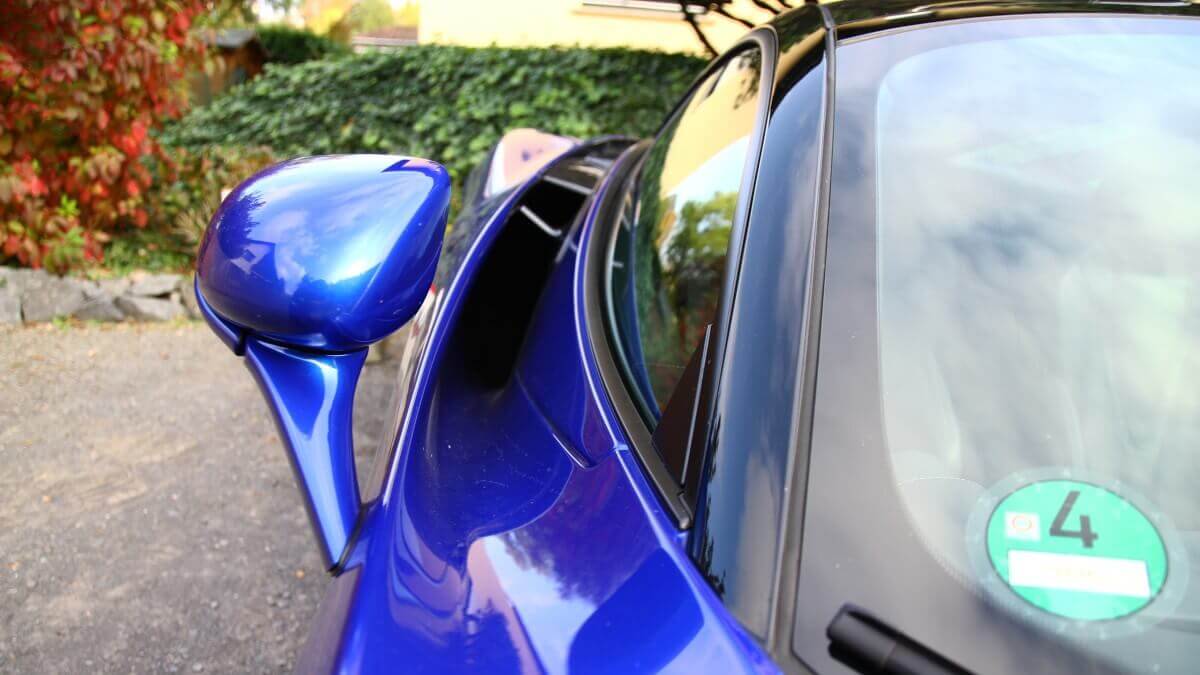

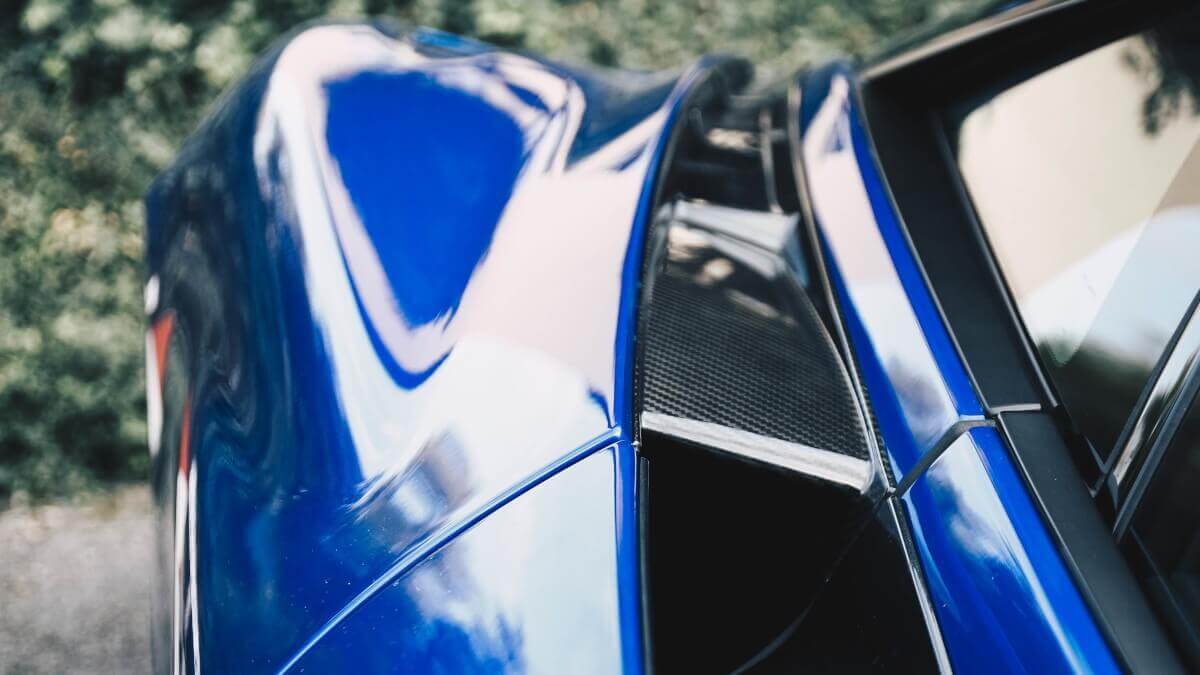

Surprisingly, in the coming days, the McLaren did not take too much attention. Sure, especially little boys got shiny eyes and quite a few pulled on the hands of their mothers to get a better look, when the British supercar parked at the side of the road or in a parking lot. But passers-by in villages and towns often lacked reactions. Is the four-liter V8 biturbo engine acoustically too cautious to announce itself from afar? Compared to some competitors, it is actually rather quiet in city traffic, which is noted benevolently both inside and out. Only at higher speeds and revs, the eight-cylinder engine comes to full advantage, while both turbochargers noticeable and audible blow the march – or better whistle. But for this you should not be in the city center, where such behavior is simply unacceptable.
Sophisticated Aerodynamics
Those who took a closer look at the McLaren 720S were particularly fond of the sophisticated aerodynamics. Here, the British manufacturer visibly has invested a lot of brain work to direct the wind specifically in the direction where they want it to go. Next to downforce-increasing components such as the front spoiler and the extendable rear wing, the cooling ducts are especially noteworthy. These are subject to even the headlights, as their housings turn out to be air inlets at second glance. At the front of the butterfly doors, at the top of the belt line, begins an indentation that leads diagonally down to the radiators. In profile view of the car, there is nothing to see of these cooling areas. Further inlet and outlet slots extend around the rear side windows down to the rear wing, in front of which the inlet for the air intake system of the V8 sits. Below the narrow LED taillights another outlet grille is mounted, in which the two exhaust tailpipes end. In this way, more space is available and can be devoted to the diffuser below, whereby the downforce increases again.
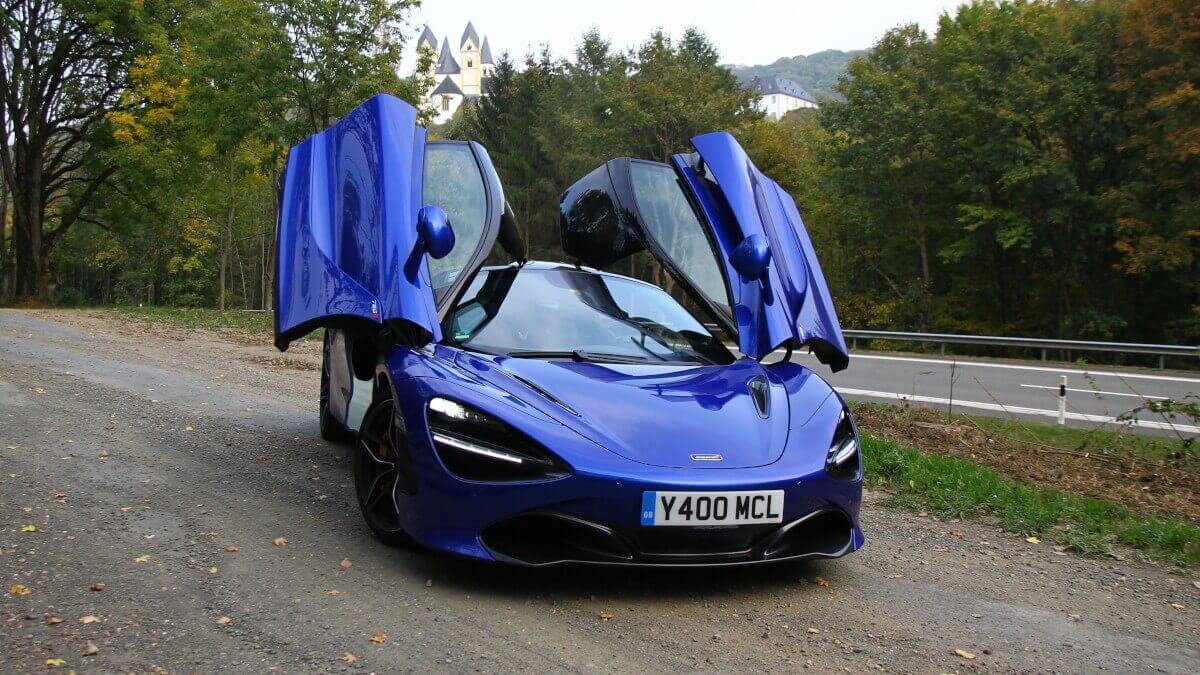

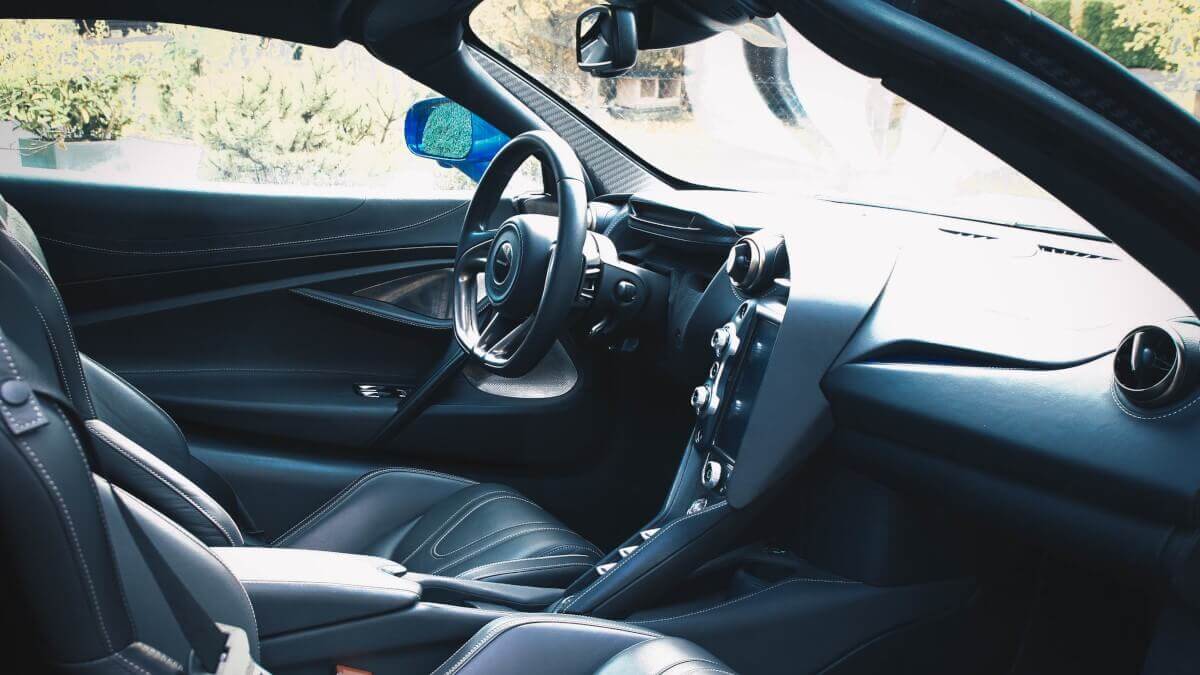

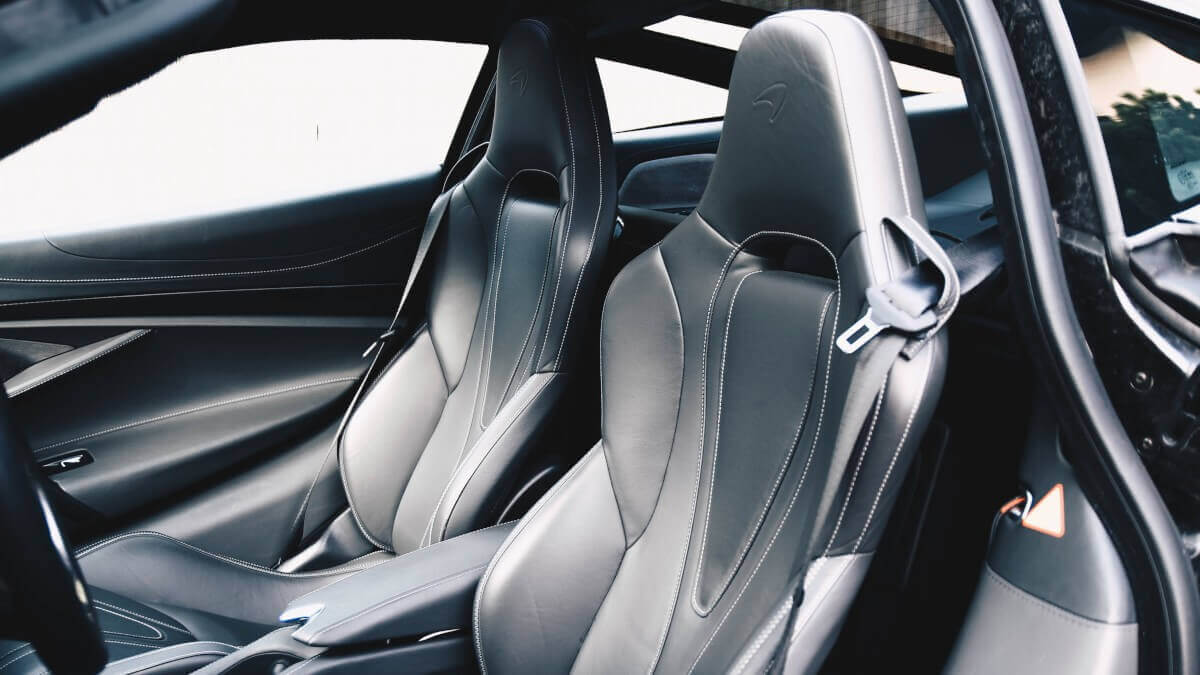

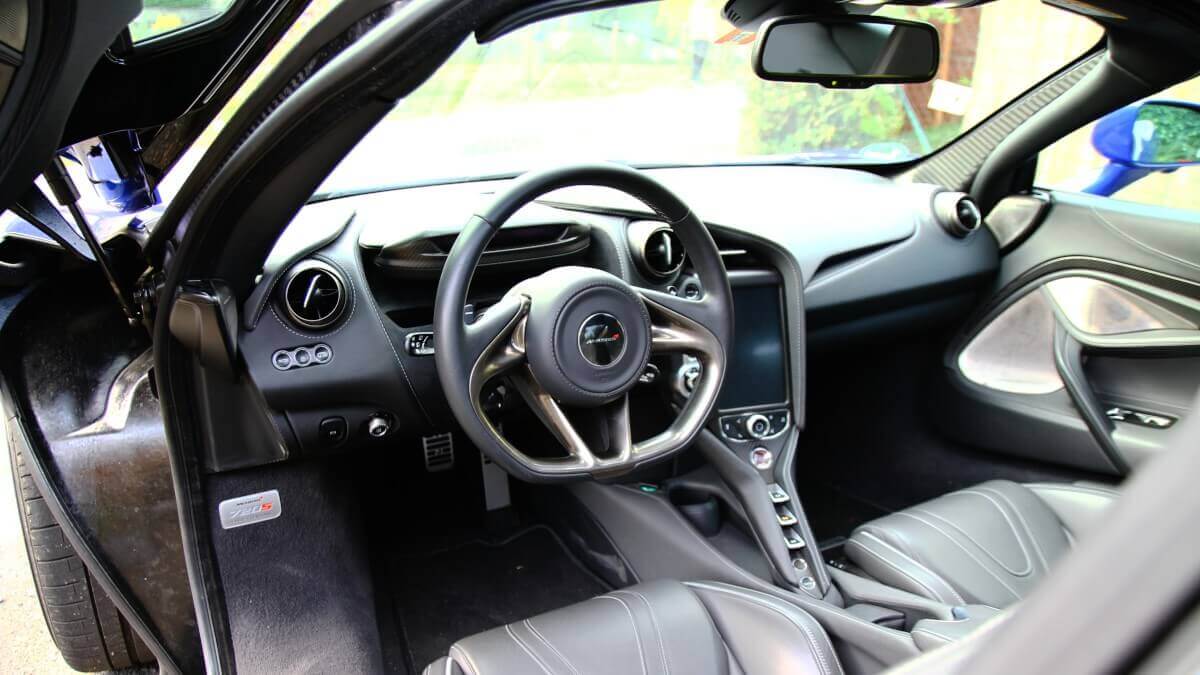

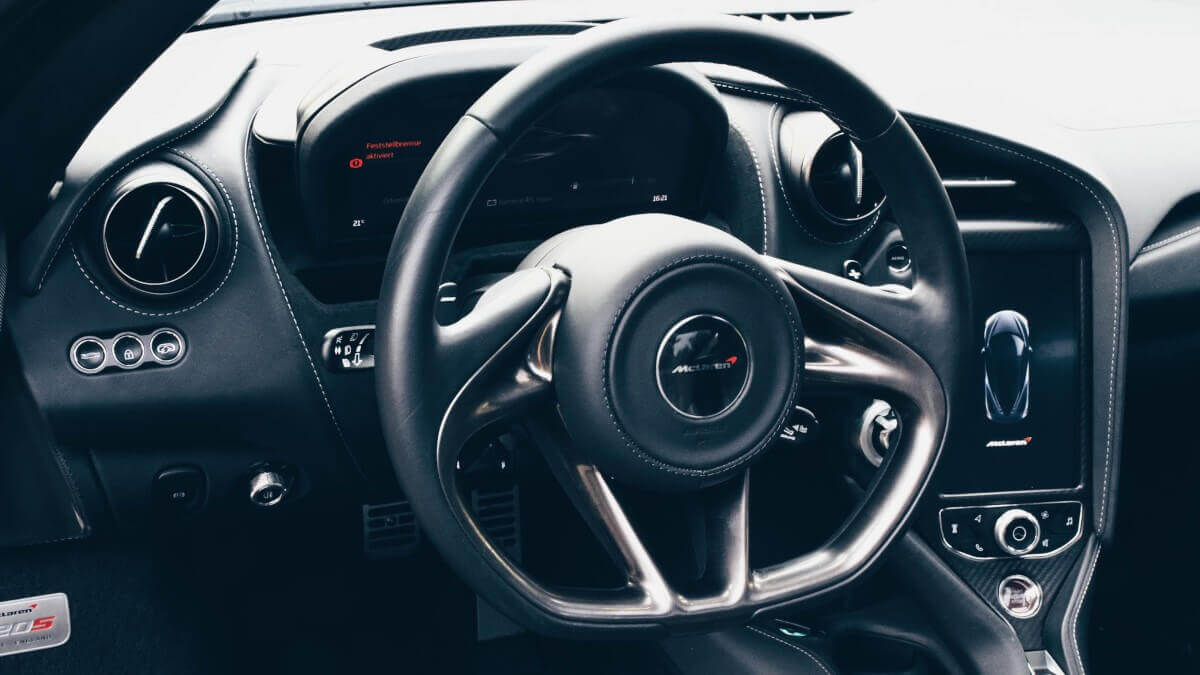

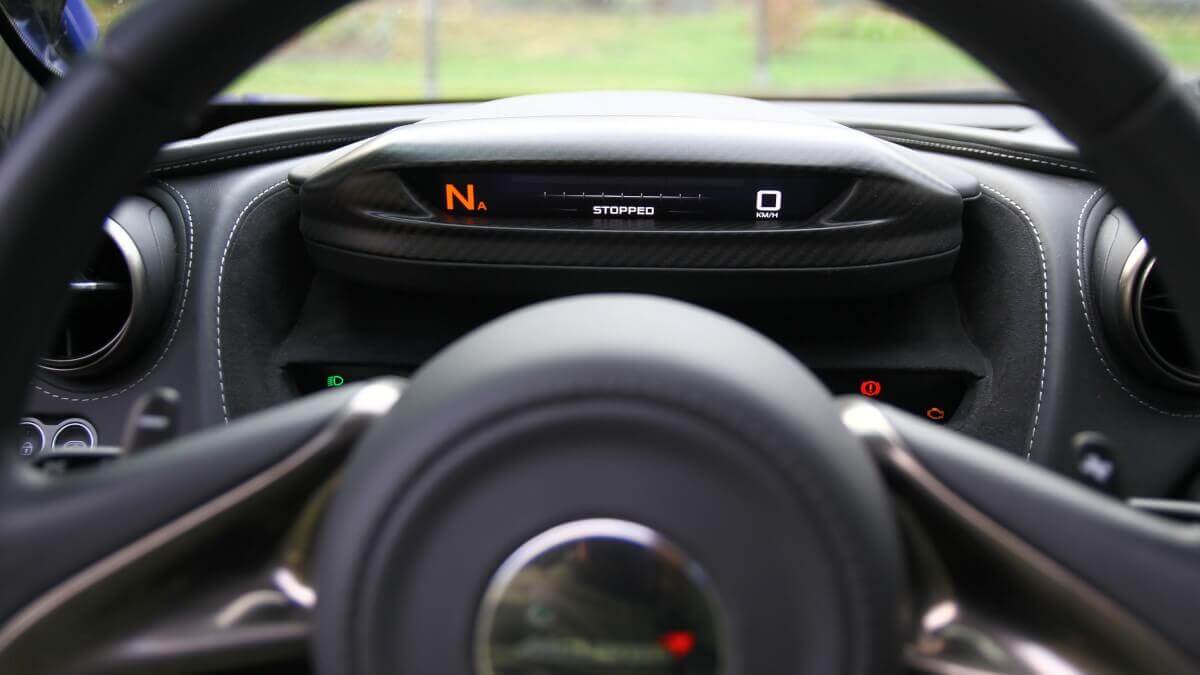

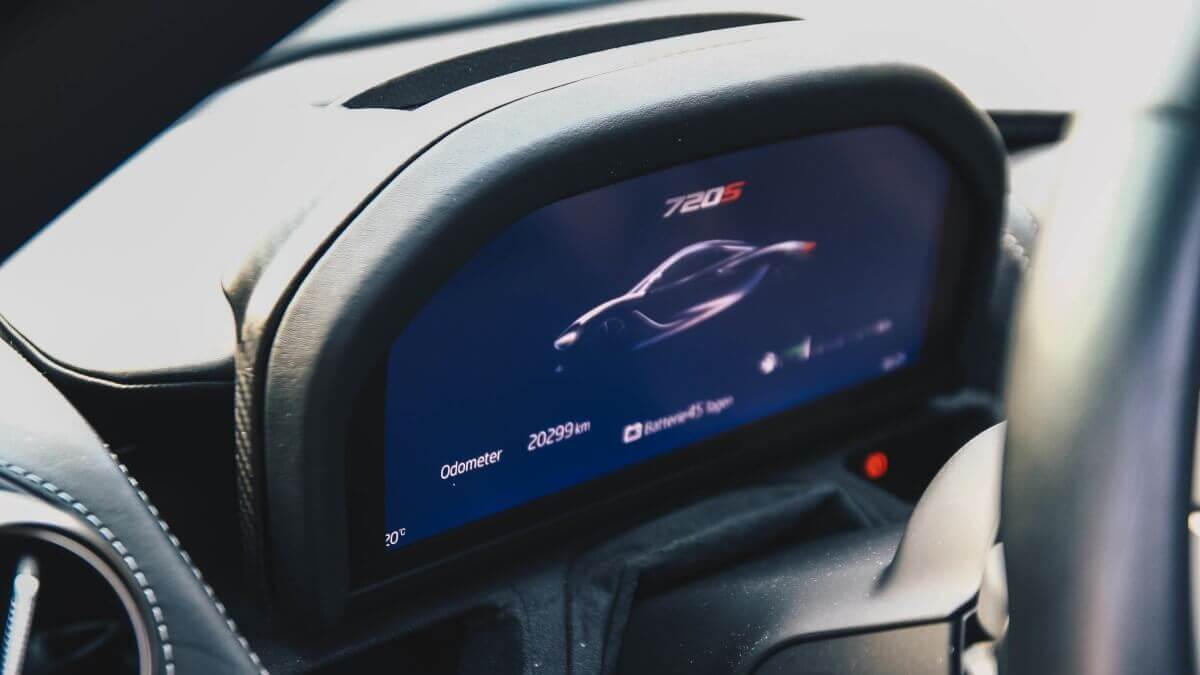

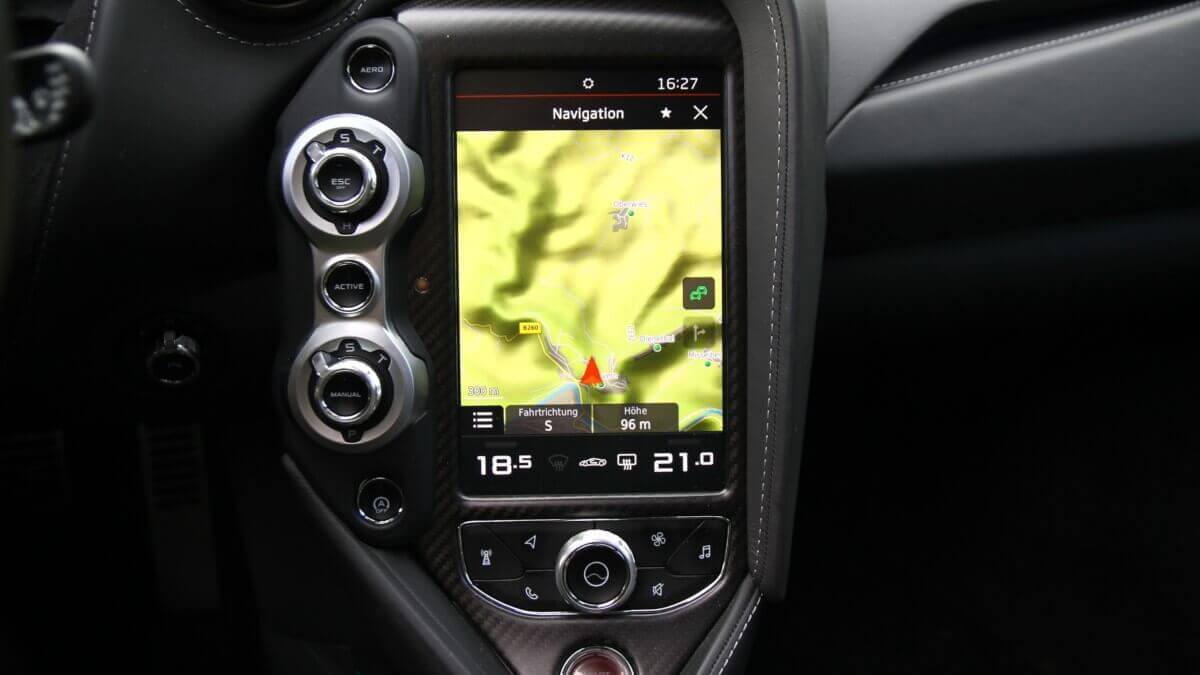

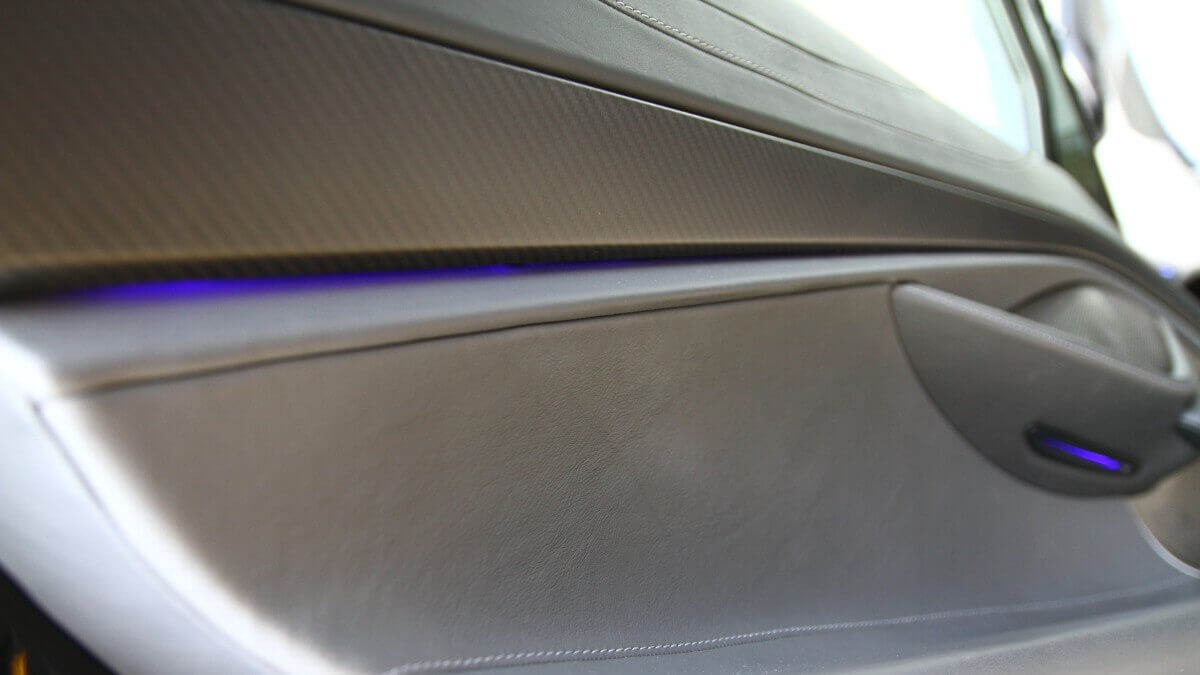

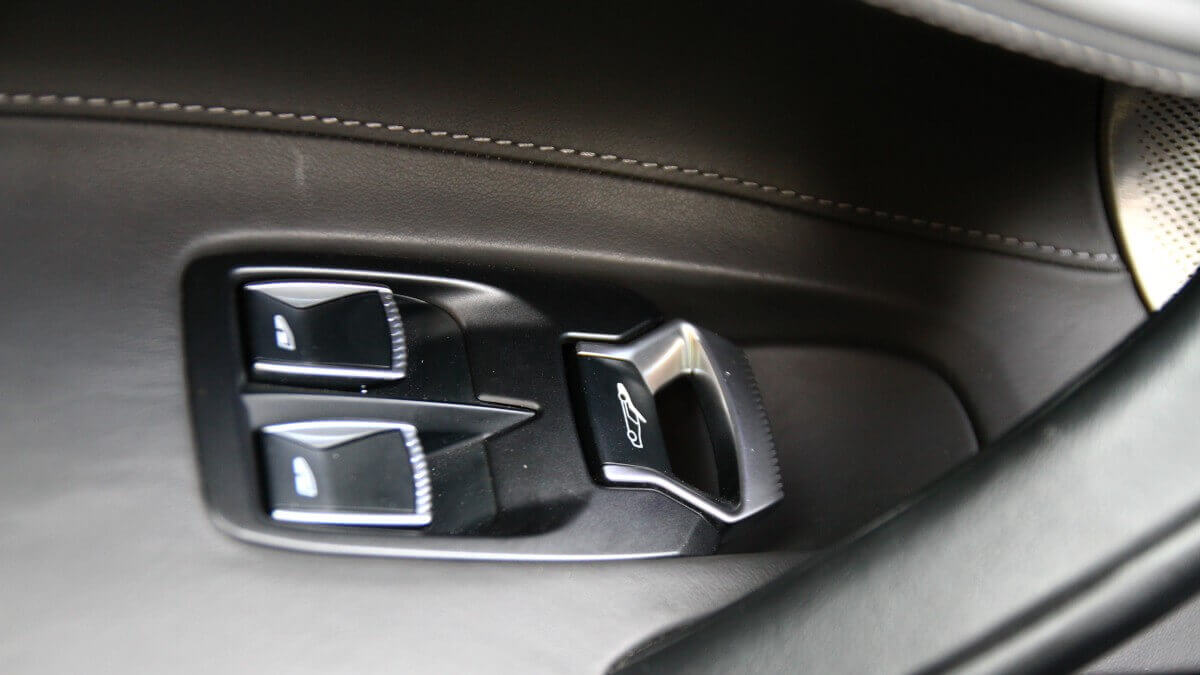

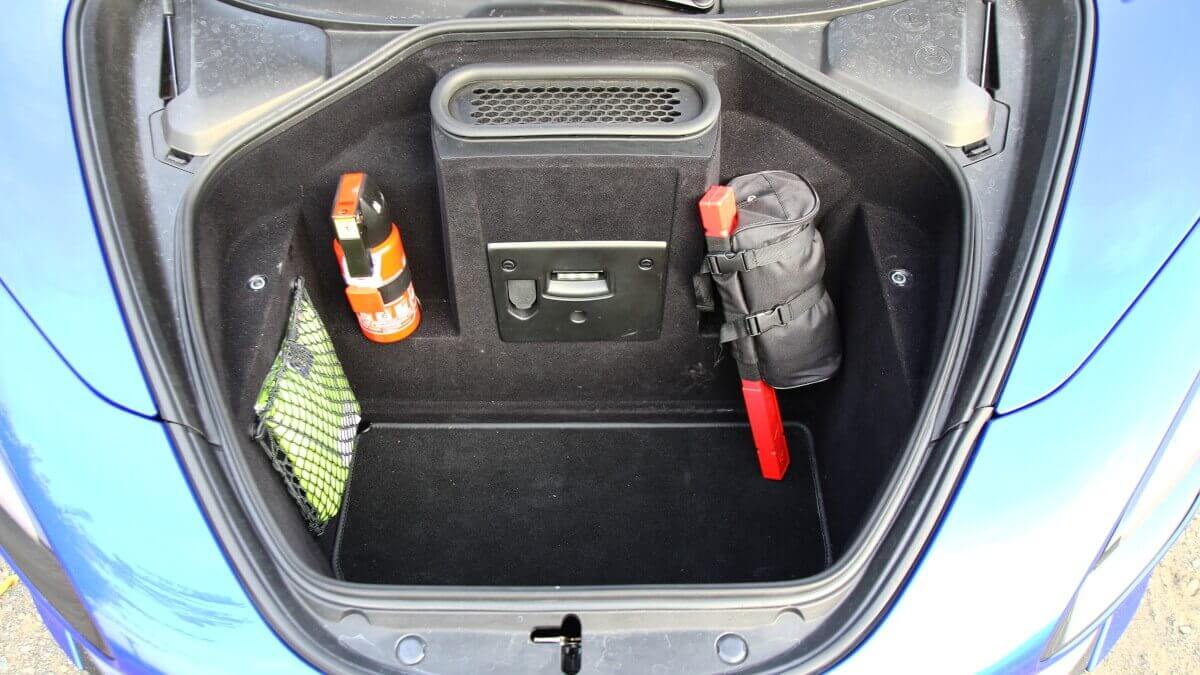

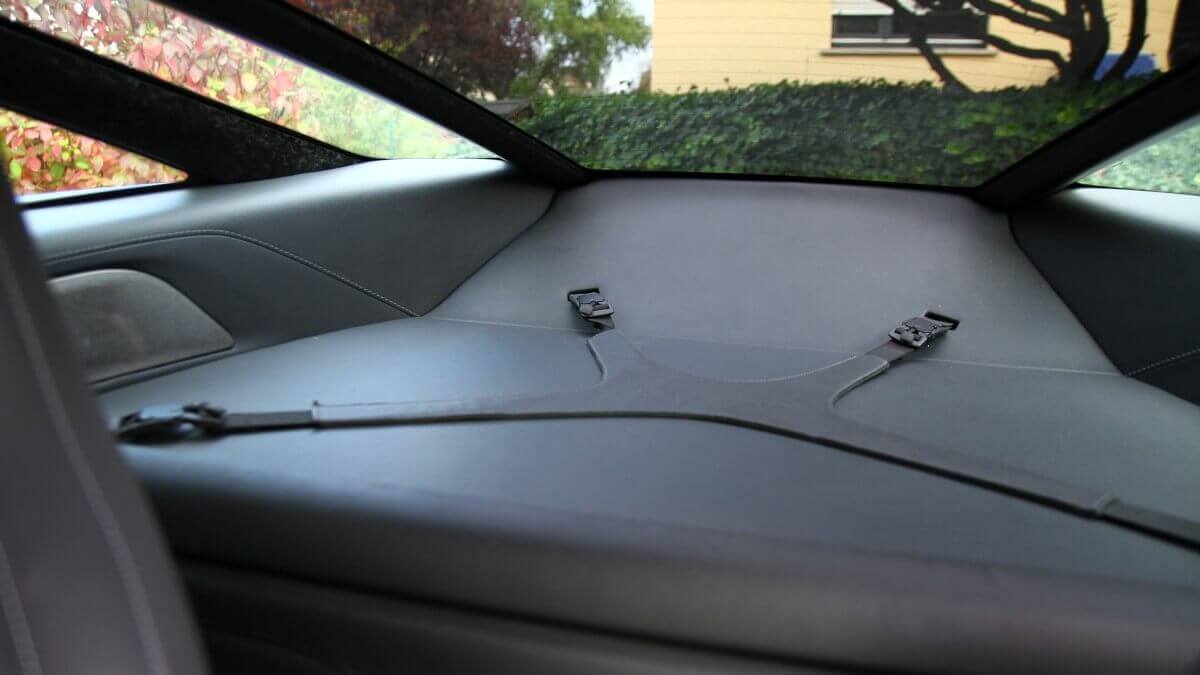

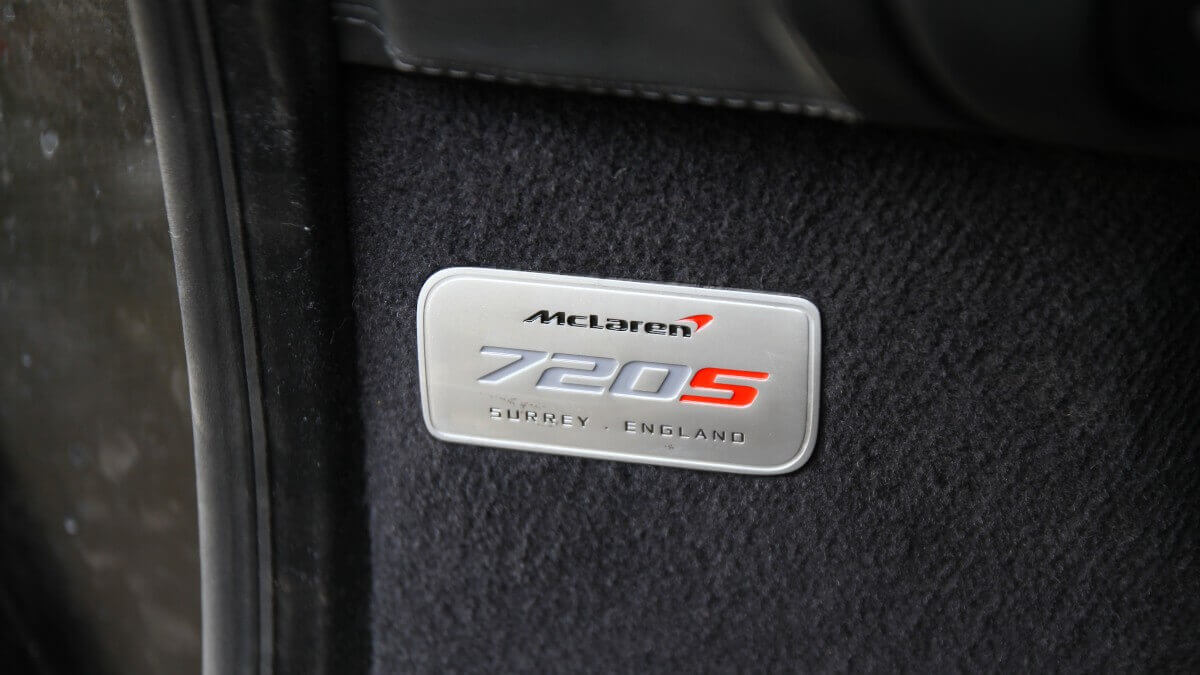

Inside you do not notice much of the aerodynamics at first. However, at some point you definitely will notice the possible cornering speeds, which are easily feasible with the 720S and probably not with any typical middle class vehicle. Since the highways in October no longer have warm asphalt temperatures, of course, the tires are not in their optimal operating window. The sports suspension in combination with the aerodynamics generates enough grip. But on the many kilometers we traveled in this McLaren, the well-shaped, electrically adjustable sports seats were also convincing. Also the possibilities to carry luggage are better than expected. In addition to the large trunk at the front, there is more space behind the seats and a small compartment under the central armrest, where also the USB and AUX-In ports are hidden.
Foldable display is a very good idea
At first glance, you might think this detail is a joke, but it proves to be a terrific idea, especially at night driving. Behind the steering wheel is a large digital display, on which speed, gears, revs and various other information down to navigation instructions are displayed. However, at the touch of a button it folds down, drives a little way into the dashboard and reveals a narrow information line on its upper side, which only shows speed, revs and selected gear. This reduction is actually intended for use on the racetrack, where the driver has to focus primarily on the corner apex, but also helps significantly at night drivings to direct the flow of concentration on the road. And that is certainly not the worst decision with 720 hp behind your seat.
Autumnal decoration serves as picture background
In the search for interesting photo motifs along our way, a real stroke of luck emerges. A small village has decorated the central square beautifully autumnal and obviously spent some effort into it. Even without the blue McLaren, pumpkins and bales of straw make quite interesting arrangements – after all, they almost seem surreal with the supercar. Rides below colorful autumn trees then lead to matching pictures in the foliage, where the glossy paint of the 720S serves as a good contrast point. While we are at contrasts: The test car driven by us carries a black painted roof, yellow brake calipers and some carbon accents as optional exterior details.
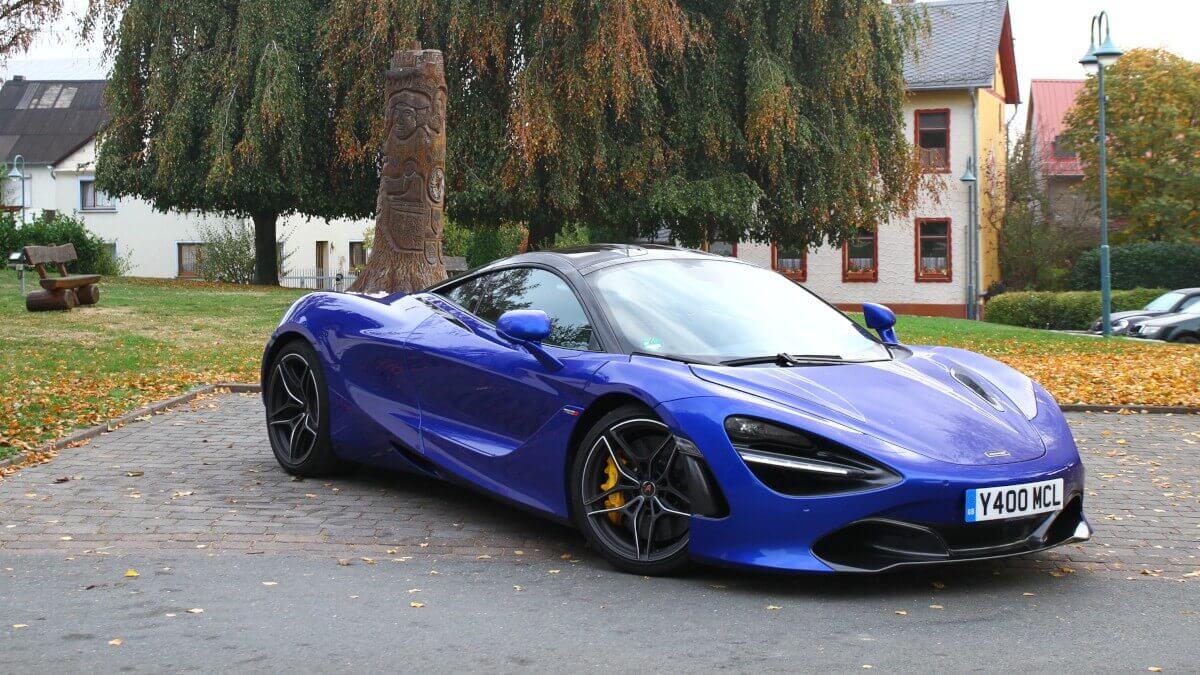

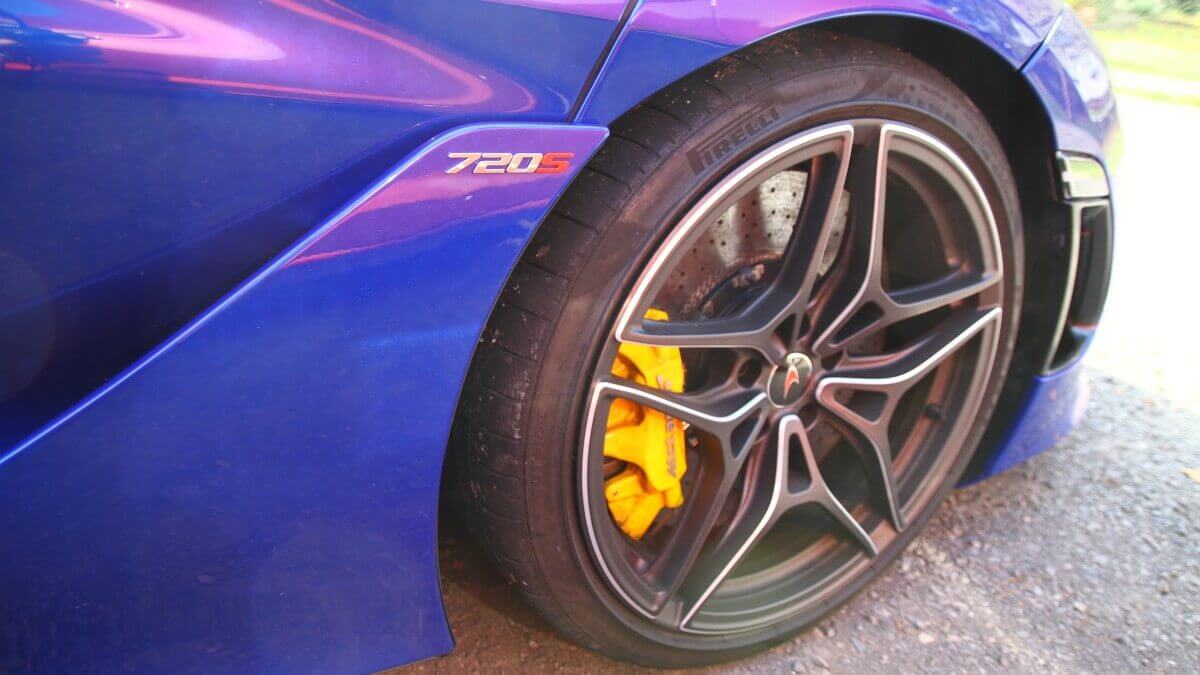

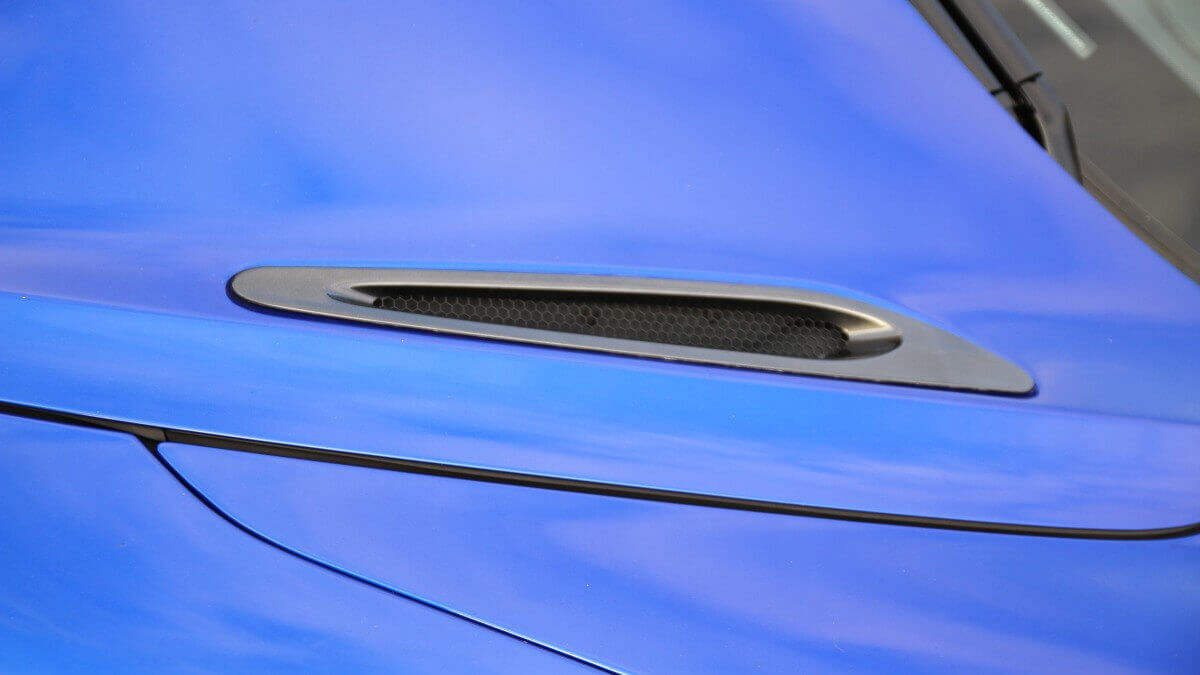

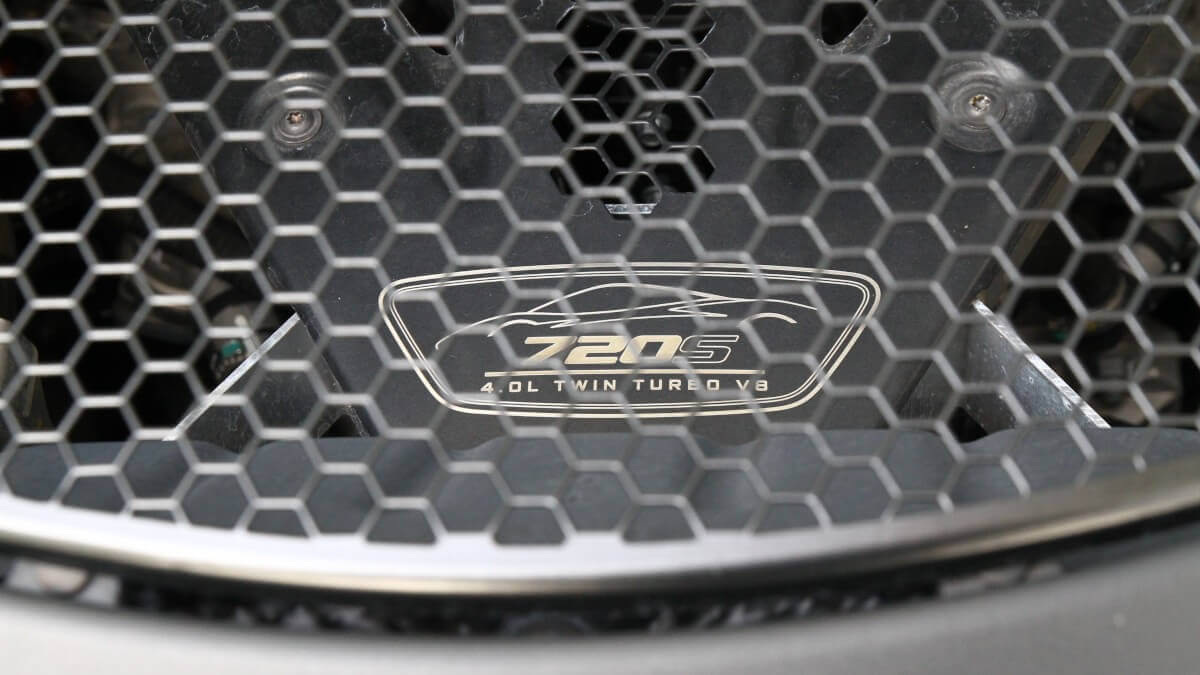

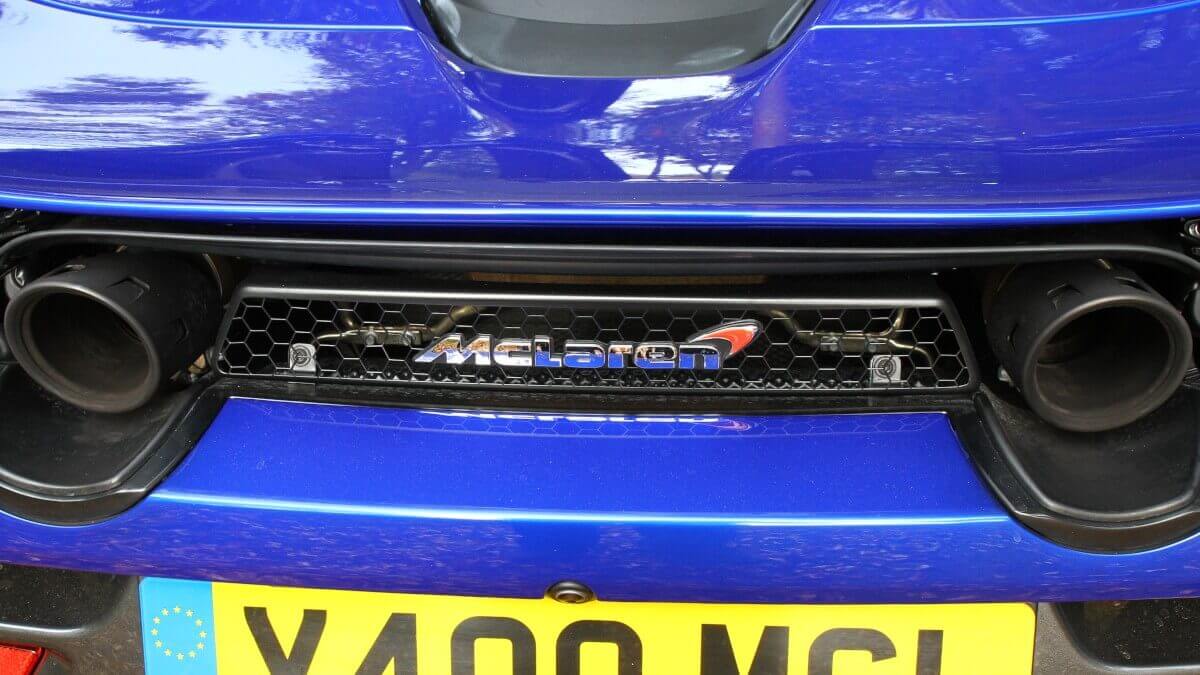

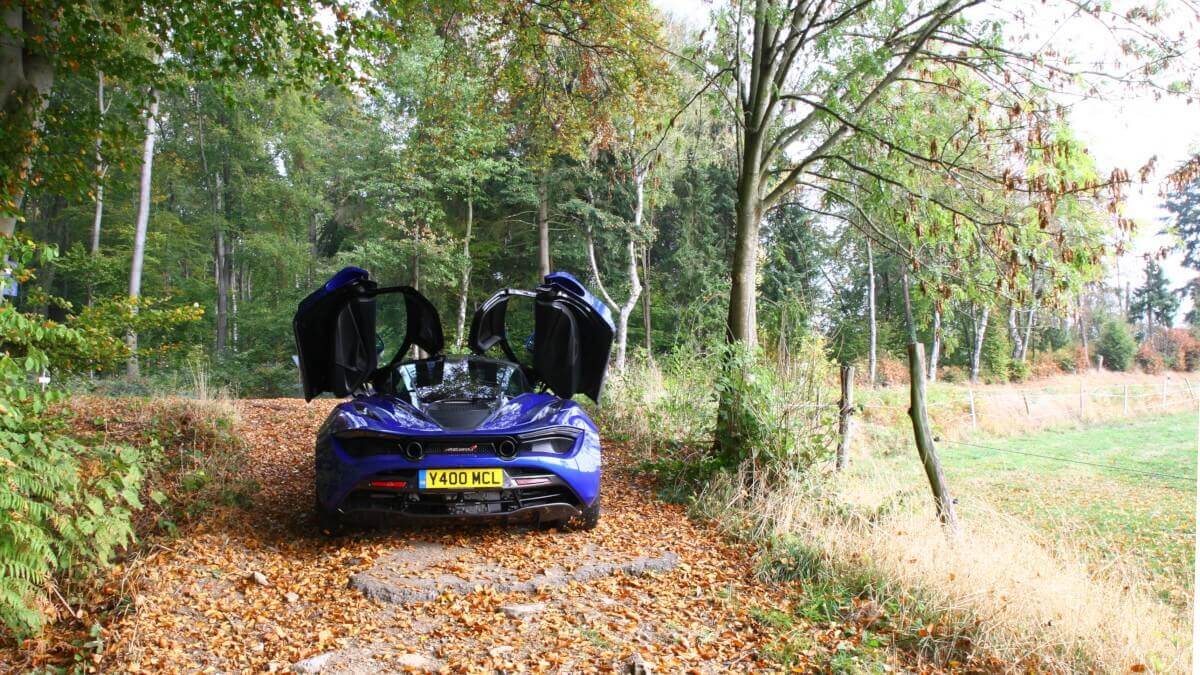

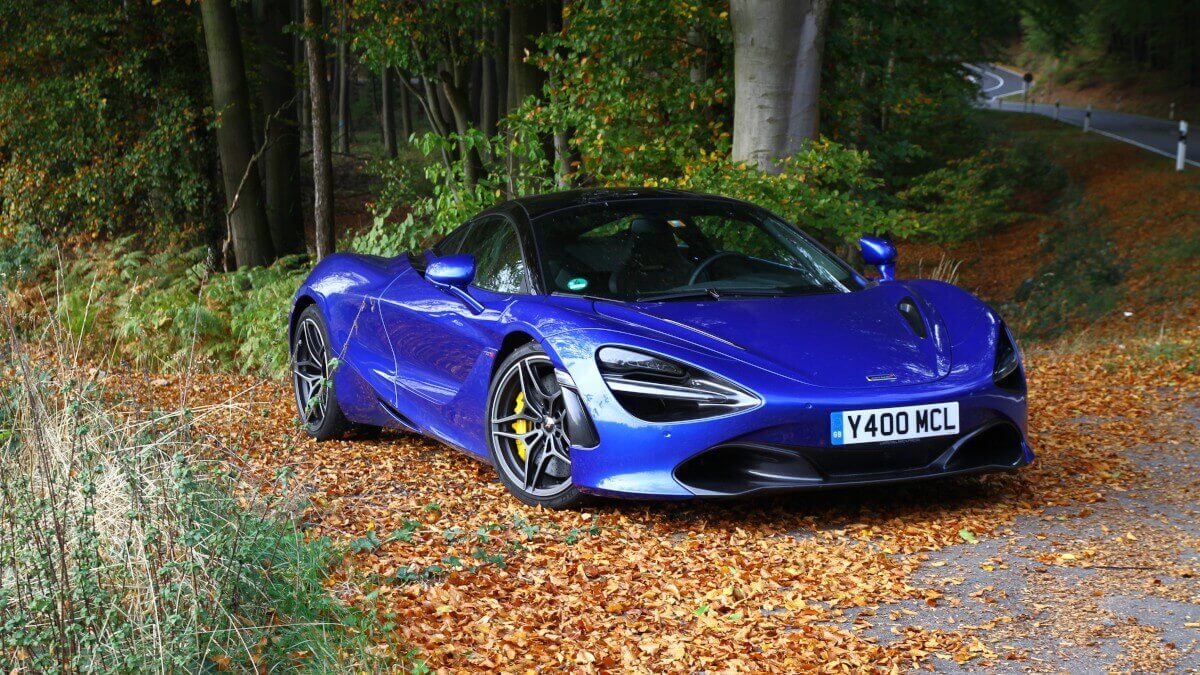

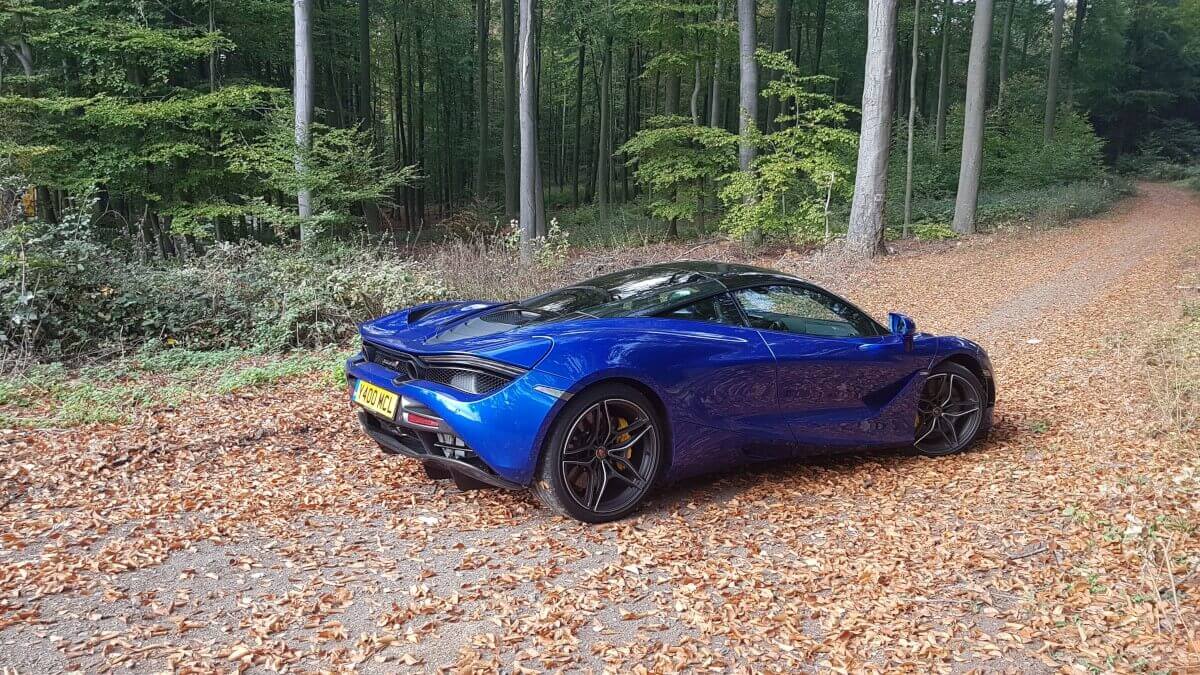

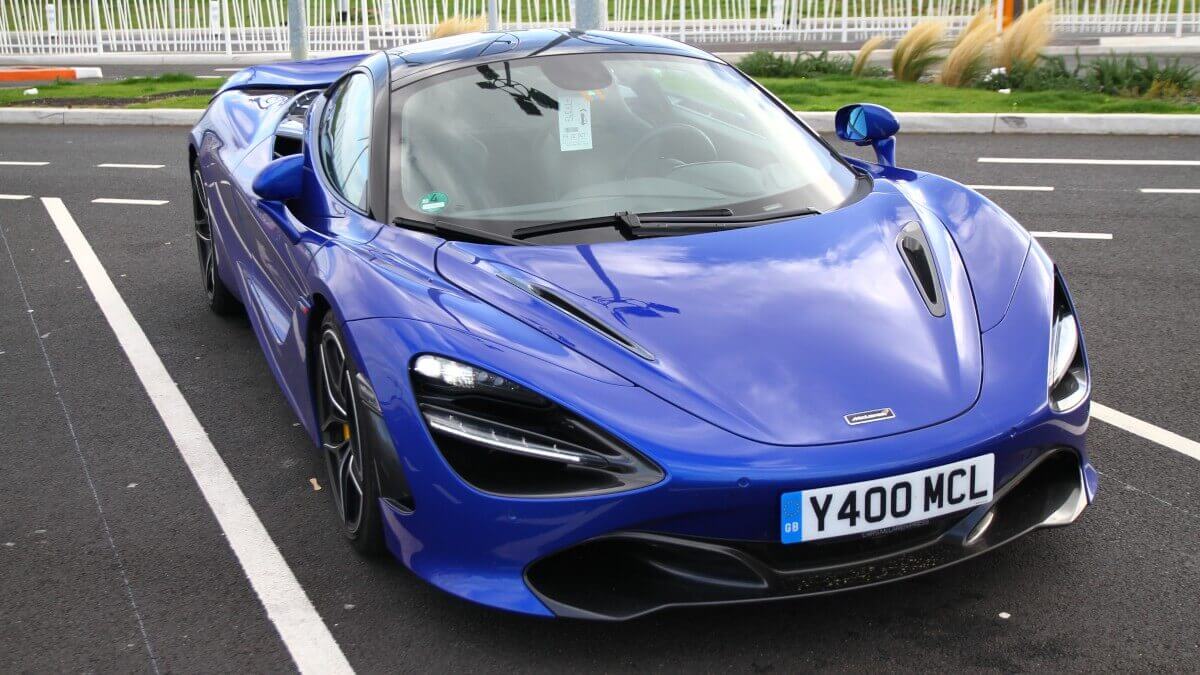

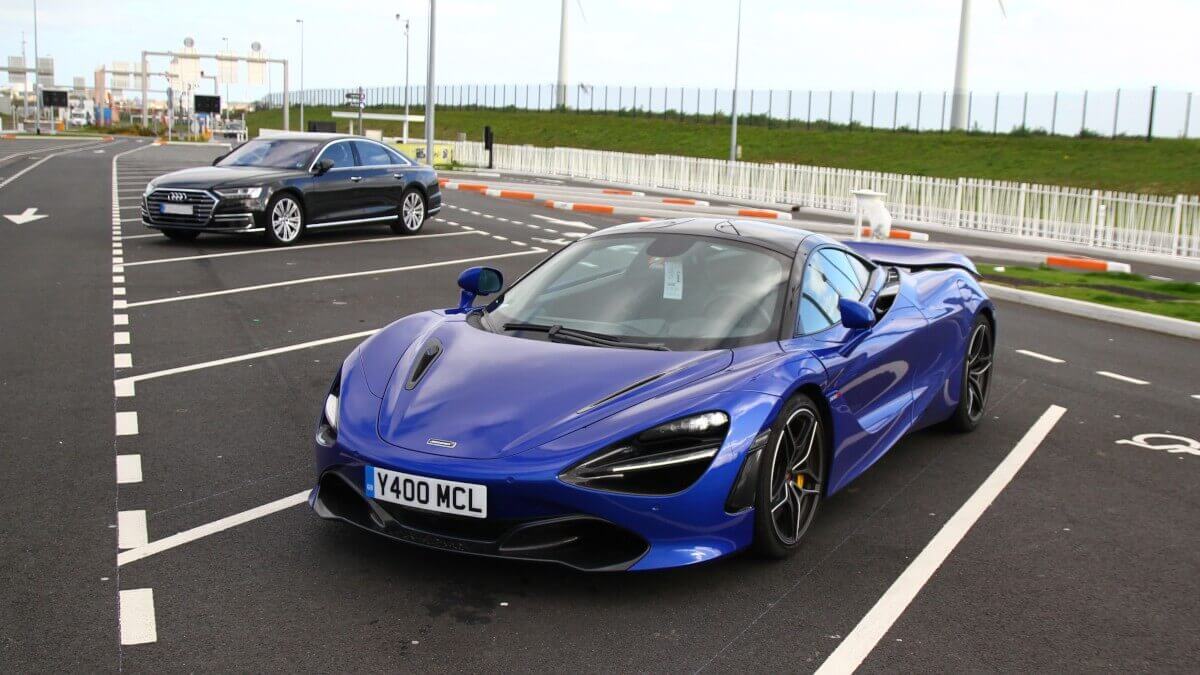

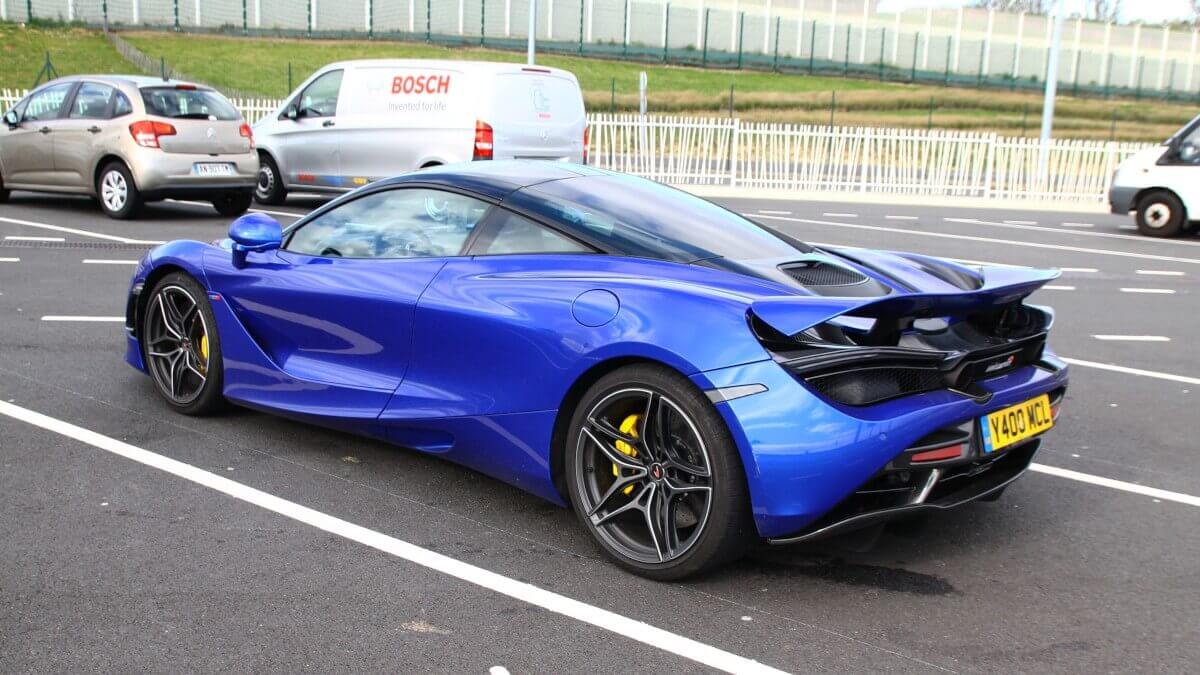

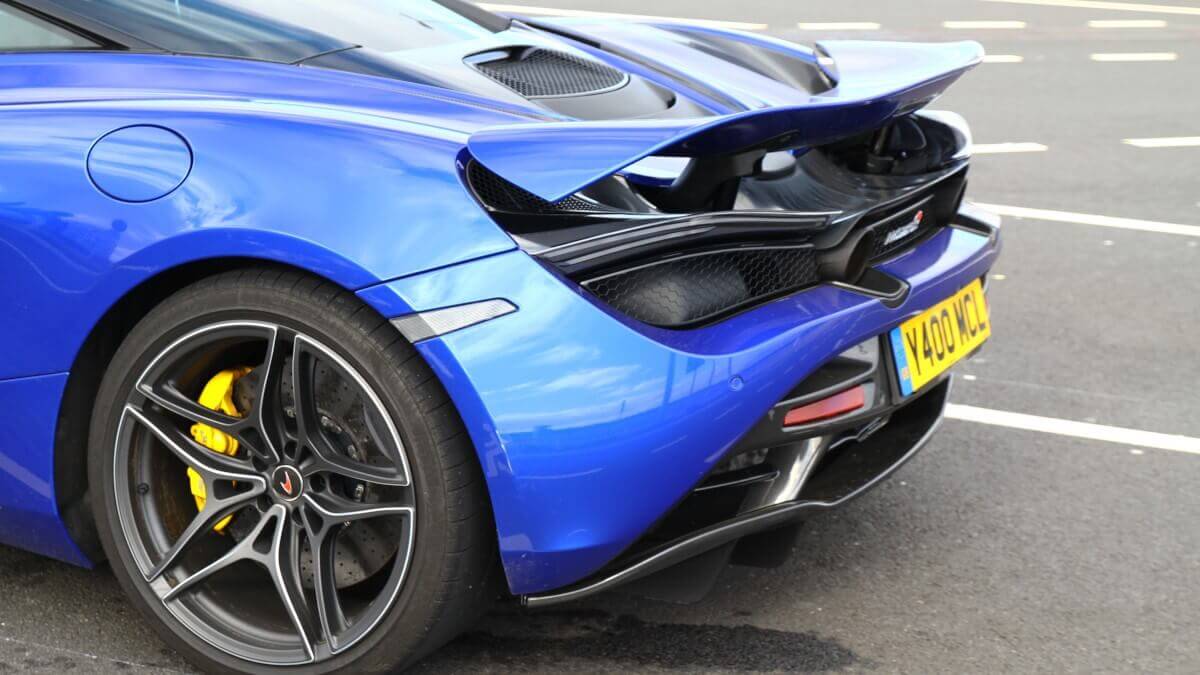

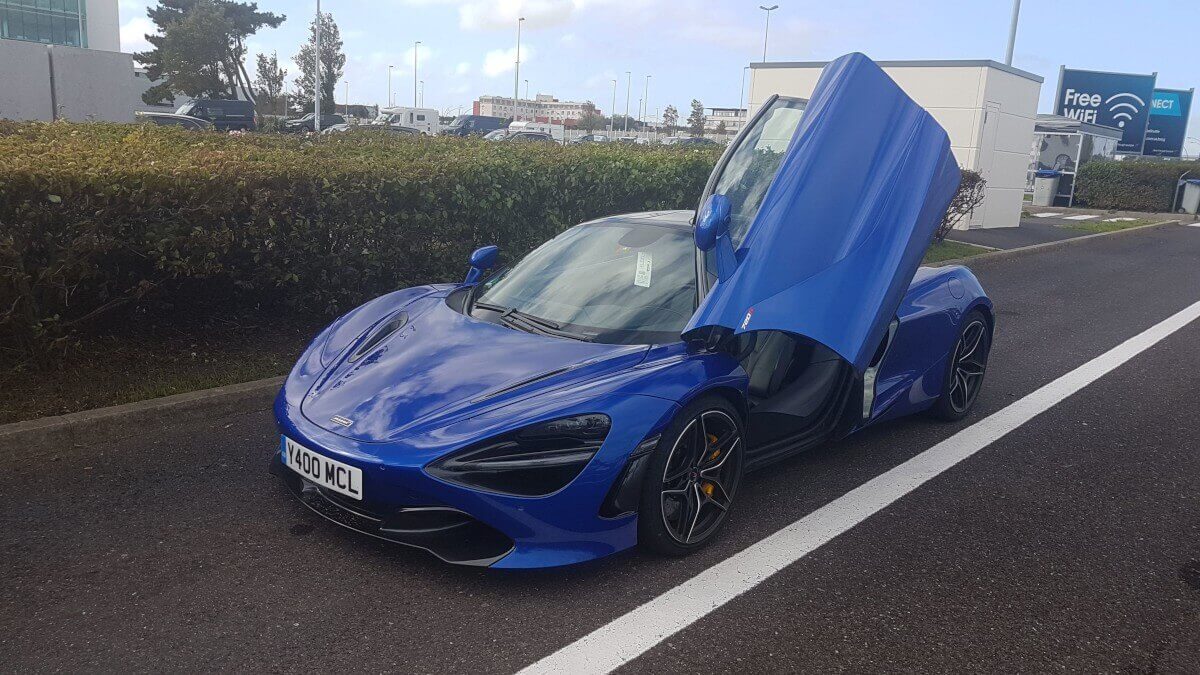

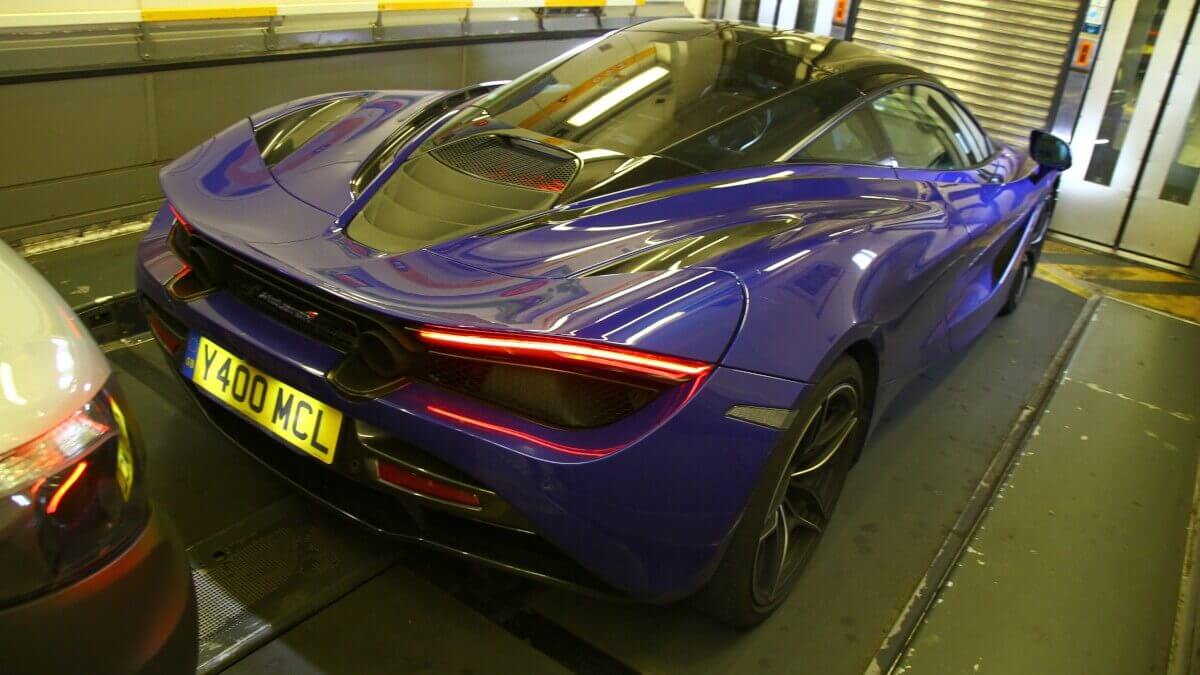

But actually, the request was about bringing the 720S back home. Perhaps the British license plate Y400 MCL caught your eye, as it did with many passerby before. How is it possible, that the car has licenseplates from the UK, but is LHD? Quite simply, as McLaren’s European press car fleet is completely registered at their plant in Woking, west of London. After about 20,000 kilometers (about 12.450 miles), these vehicles go back to the factory, are completely overhauled and then offered as pre-owned cars via the McLaren dealer network. Our 720S reached this mileage limit in just eight months, in which it was not only driven in Germany, but also drove to the Formula 1 circuit of Budapest/Hungary and back, as the recent destinations in the navigation system told us.
720 kilometers to Woking, let’s go
When the car covers such a distance with ease and without any problems, the trip home to Woking should not be a big deal. The alarm clock rings at 6:00 am and after a short morning visit to the toilet, a mini breakfast and a quick fuel stop, we are off to the UK. A total of 720 kilometers (447 miles) initially appeared in the display as the distance to be covered. 720? Well, that fits perfectly. But the remaining fuel range even with a completely filled tank reminds us, that it won’t be possible without another stop. Shortly before we reached the border between Germany and the Netherlands, a few liters of 98-octane fuel went into the tank again. To anticipate: With the amount of fuel, that was in the car by now, we easily reached the main entrance of the MTC (McLaren Technology Center) and still had some miles to spare. Of course, the main reason for this is the strict speed limit in the Netherlands, Belgium, France and the United Kingdom. Here, the 720S rolls effortlessly in seventh gear in traffic, with the gearbox in automatic mode for the whole time. Miles after miles it goes towards Calais and thus to the Channel Tunnel. But then the navigation system kindly asks to drive around a traffic jam and so to leave the motorway. So we also had some miles across some Belgian villages.
9 1/2 hours on the road – only just a dream?
The planned train to cross the Channel Tunnel, meanwhile, was out of reach and finally had left the station for five minutes when the McLaren rolled onto the first few meters of the terrain in front of the tunnel. Incidentally, entering the booking data at the self-service terminals is quite uncomfortable for drivers of supercars, but in the end it worked somehow. There was a free space in the following train half an hour later, so there was some time to take final pictures of the car. Due to the width of the 720S, we had to follow a big horse transporter into the lorry section of the train, where the passage width is wider and the chance of scraping the rims is a lot less. 45 minutes later at the other side of the English Channel, the drive continues on the other side of the road. A short shutdown of the motorway and another bypass around a traffic jam later, me and the McLaren arrived in Woking at 3:00 pm local time, so 4:00 pm in Germany, after 9 1/2 hours on the road. The airport shuttle already waited, so our goodbye to the car was hard and short. Shortly after that, I was sitting at London Heathrow, looking at the duty-free area and a Harry Potter shop, wondering if all that was just a dream, of which I woke up too quickly. But the pictures on the chip in my camera and my memories of 720 wild horsepower are still too real, so it really must have happened. Thank you, Y400 MCL, for 720 (plus a few) decent kilometers from Germany to the UK. Thank you, McLaren, for this very short-term and interesting opportunity of testing your latest Super Series vehicle. And of course thank you to the weather gods for the golden October 2018, which made the rides with the 720S much more pleasant than it would have been in the rain.
Images: Matthias Kierse, Katrin Pitsch

